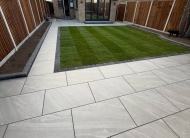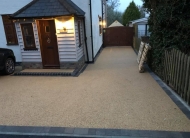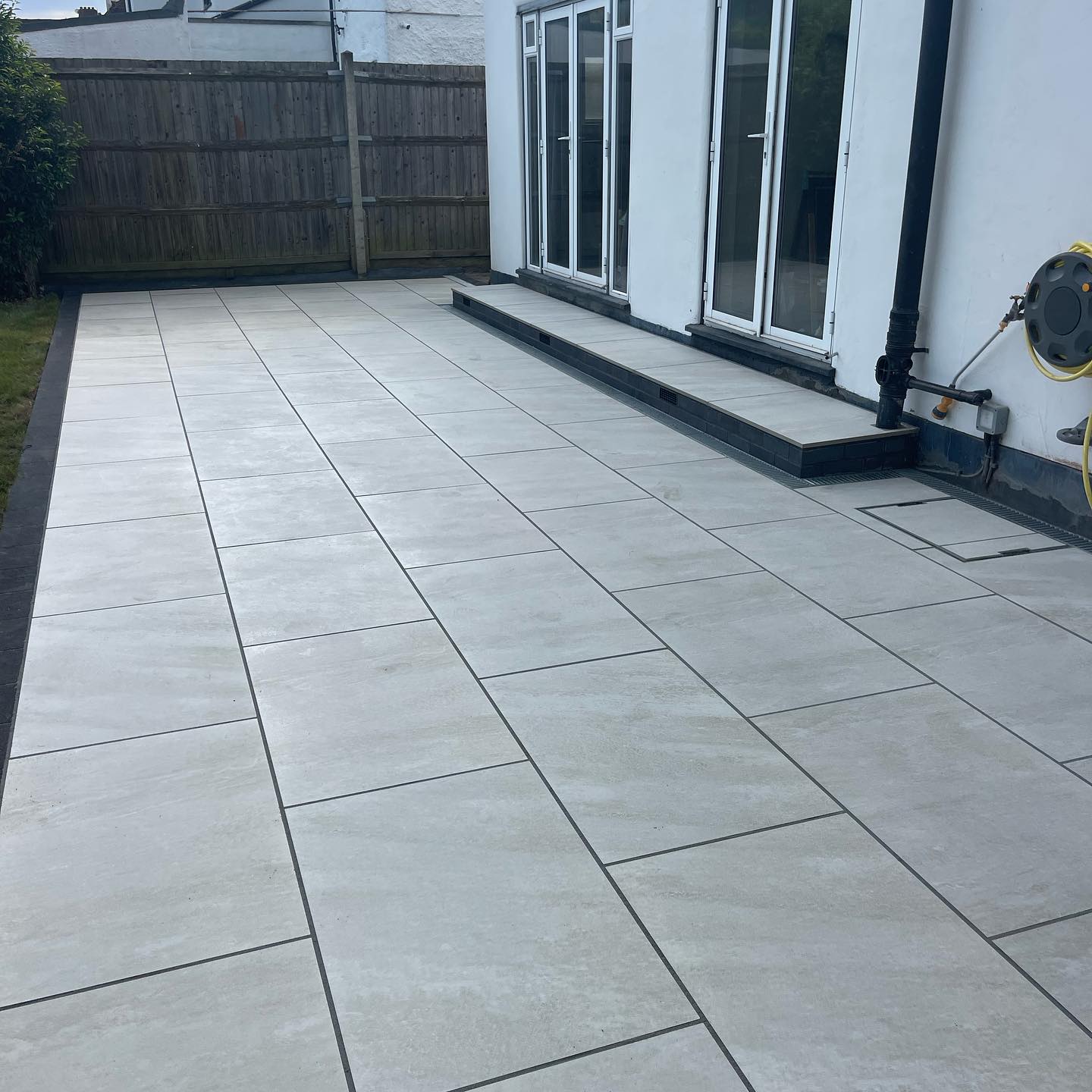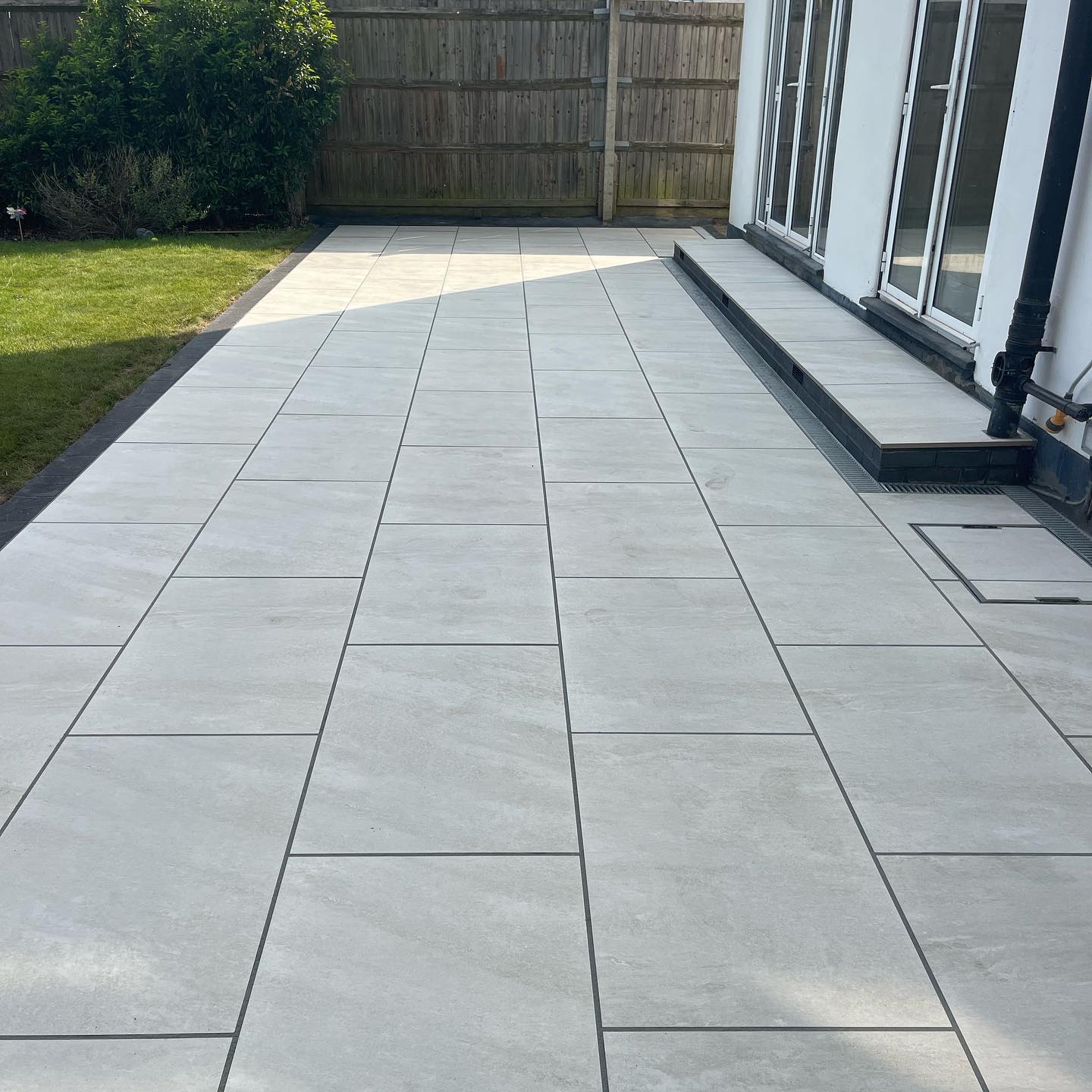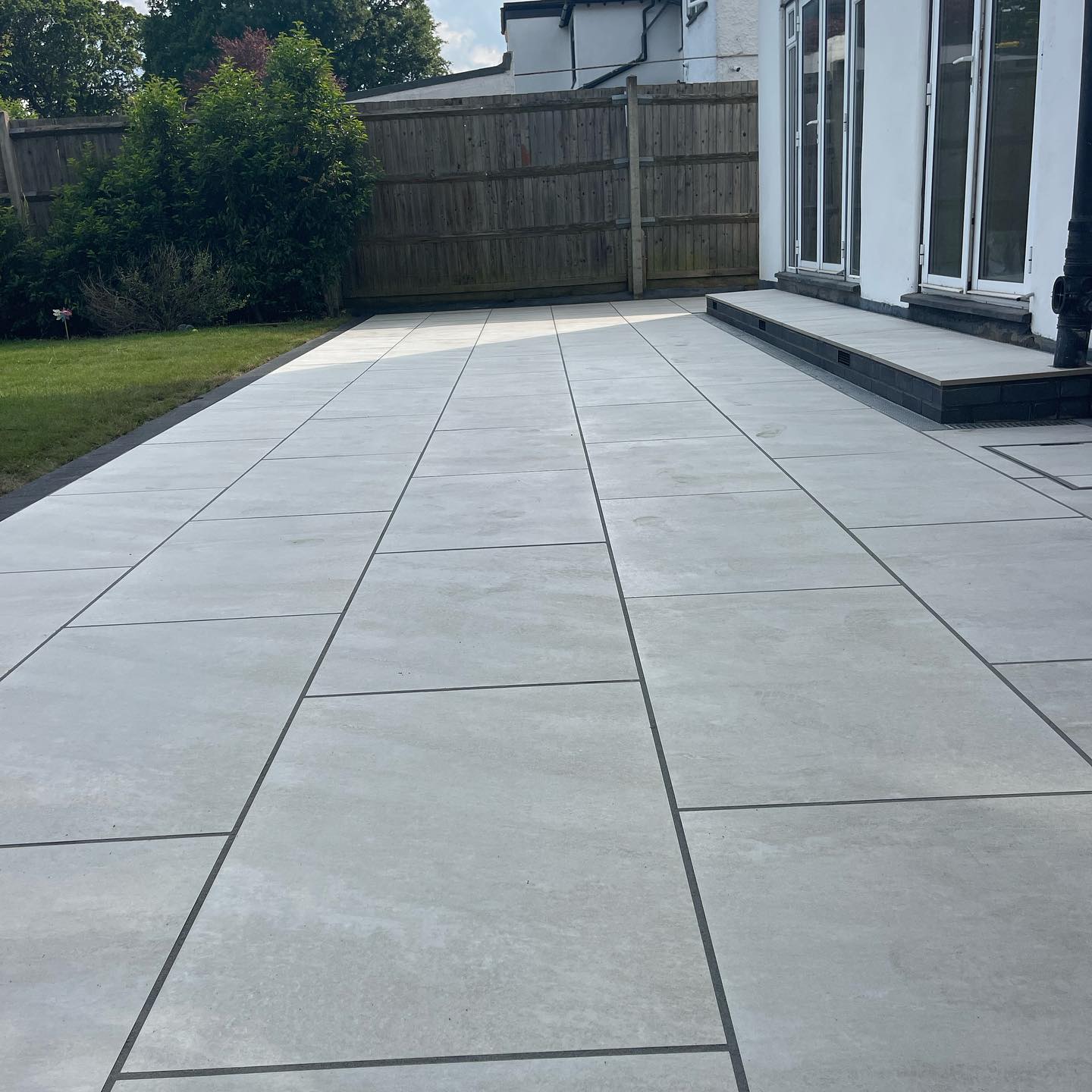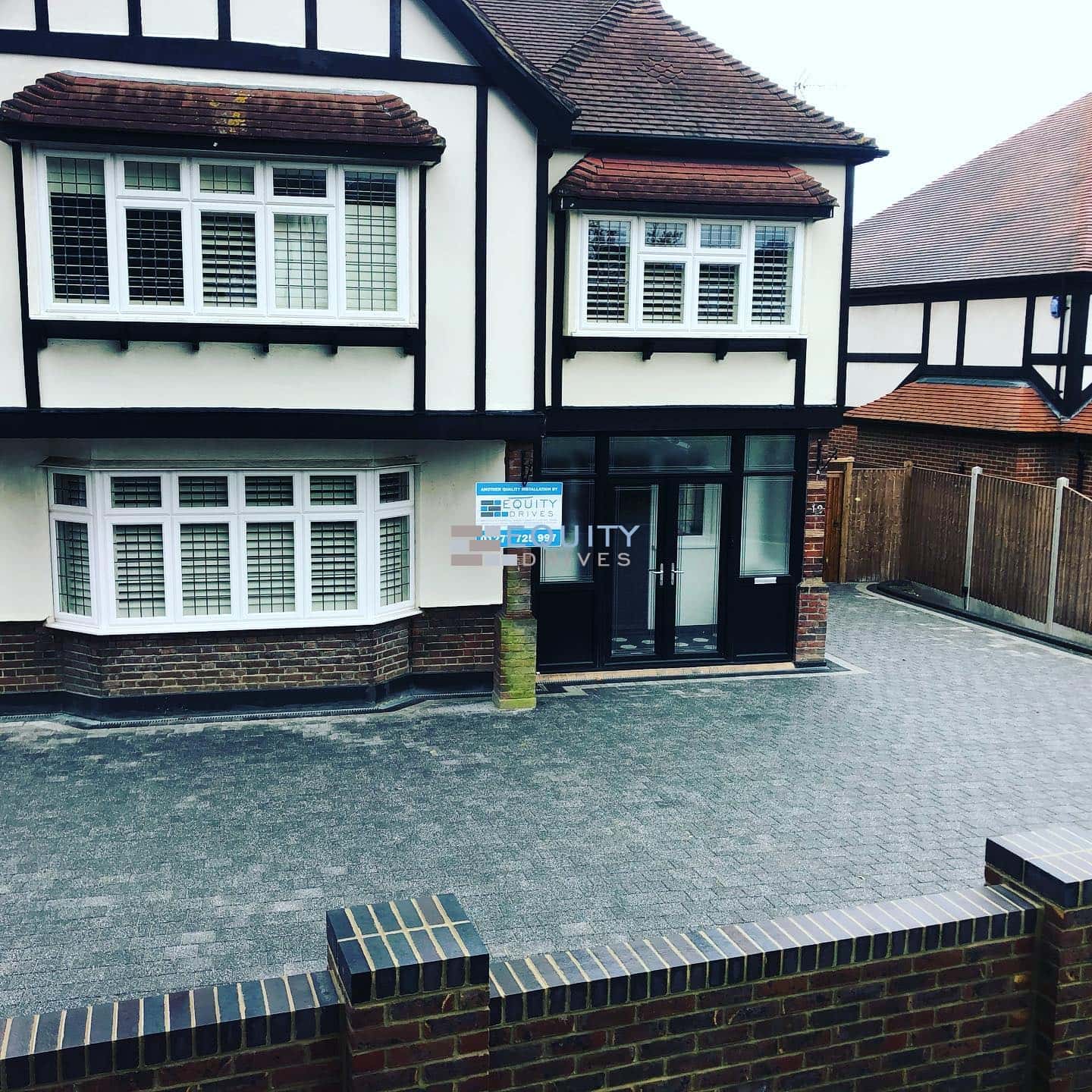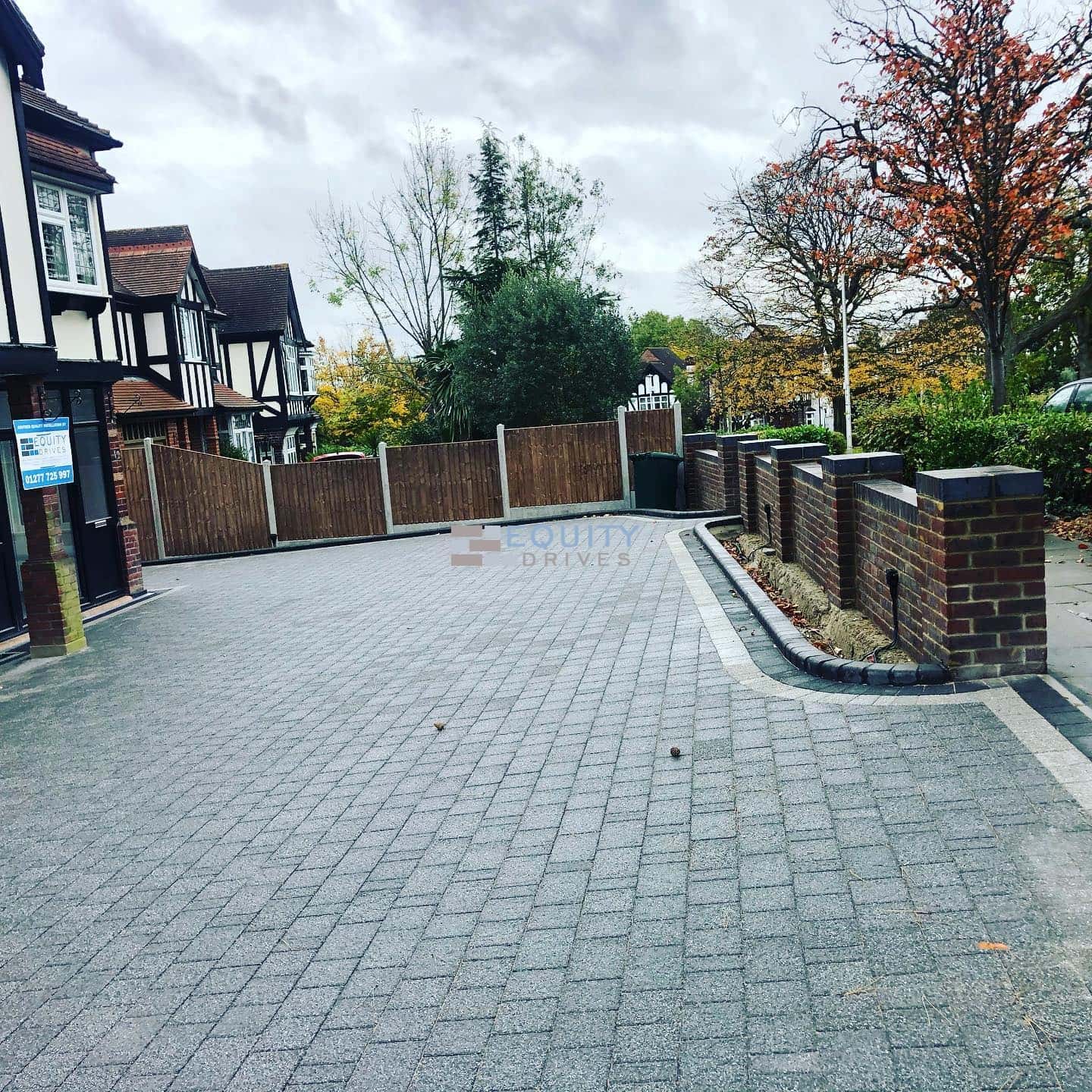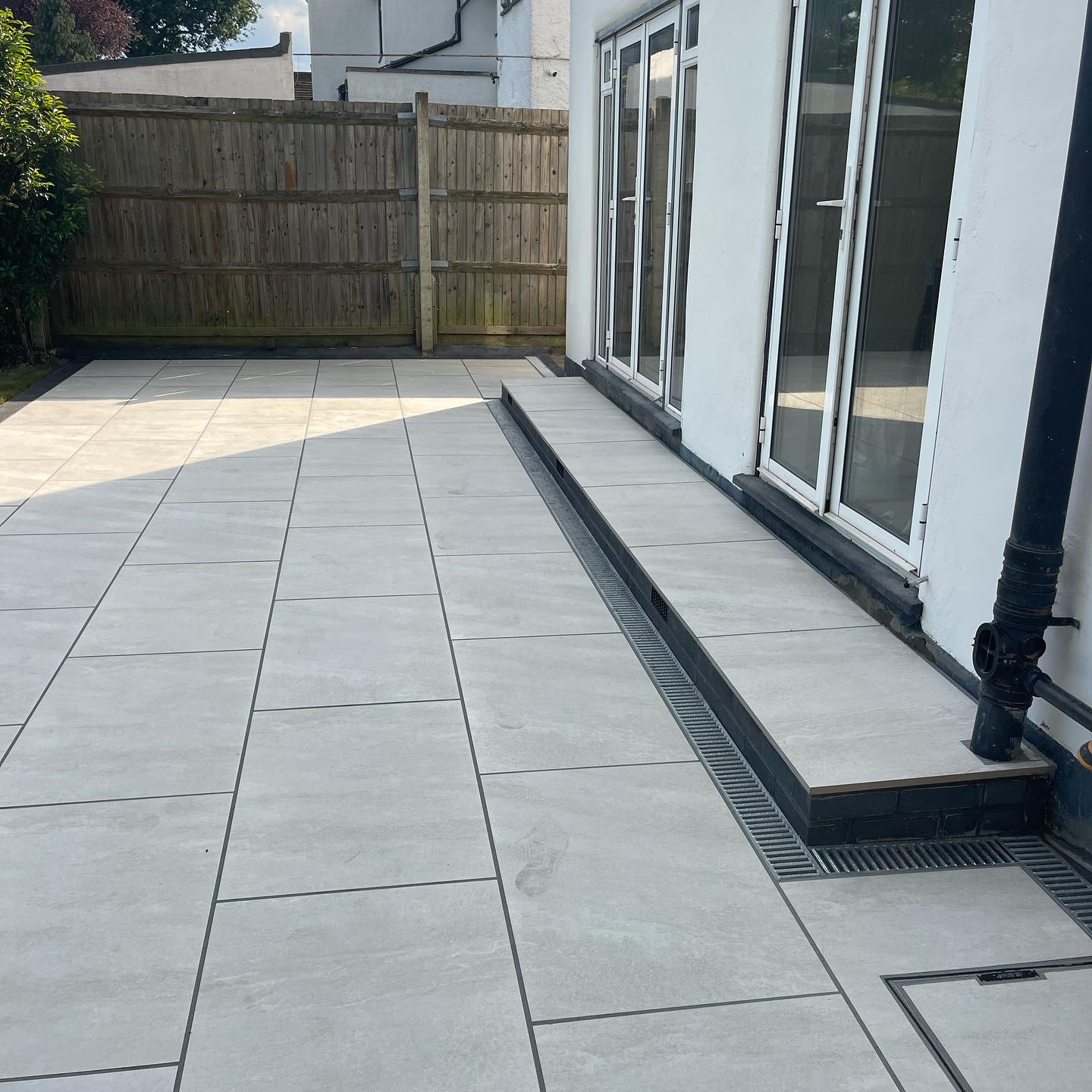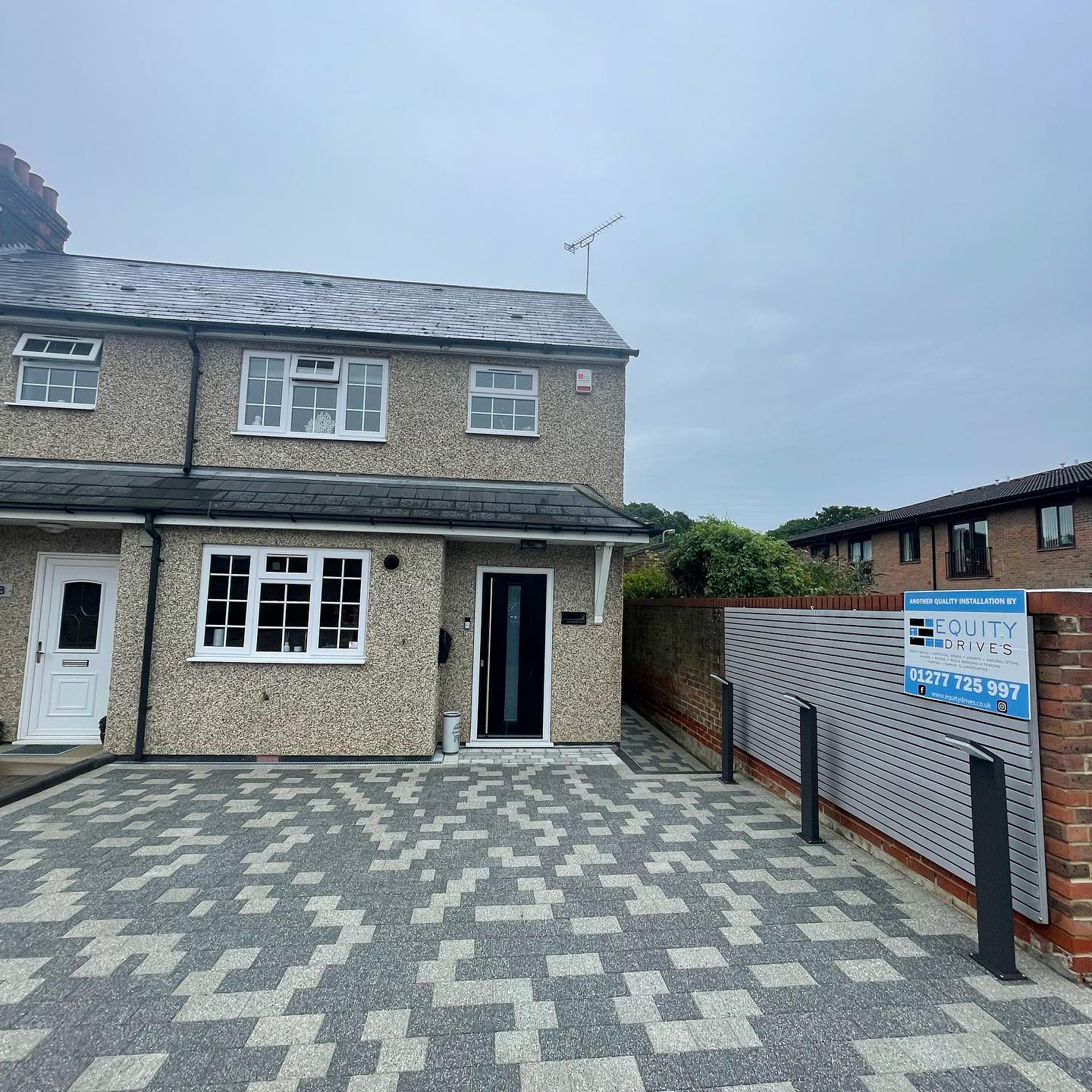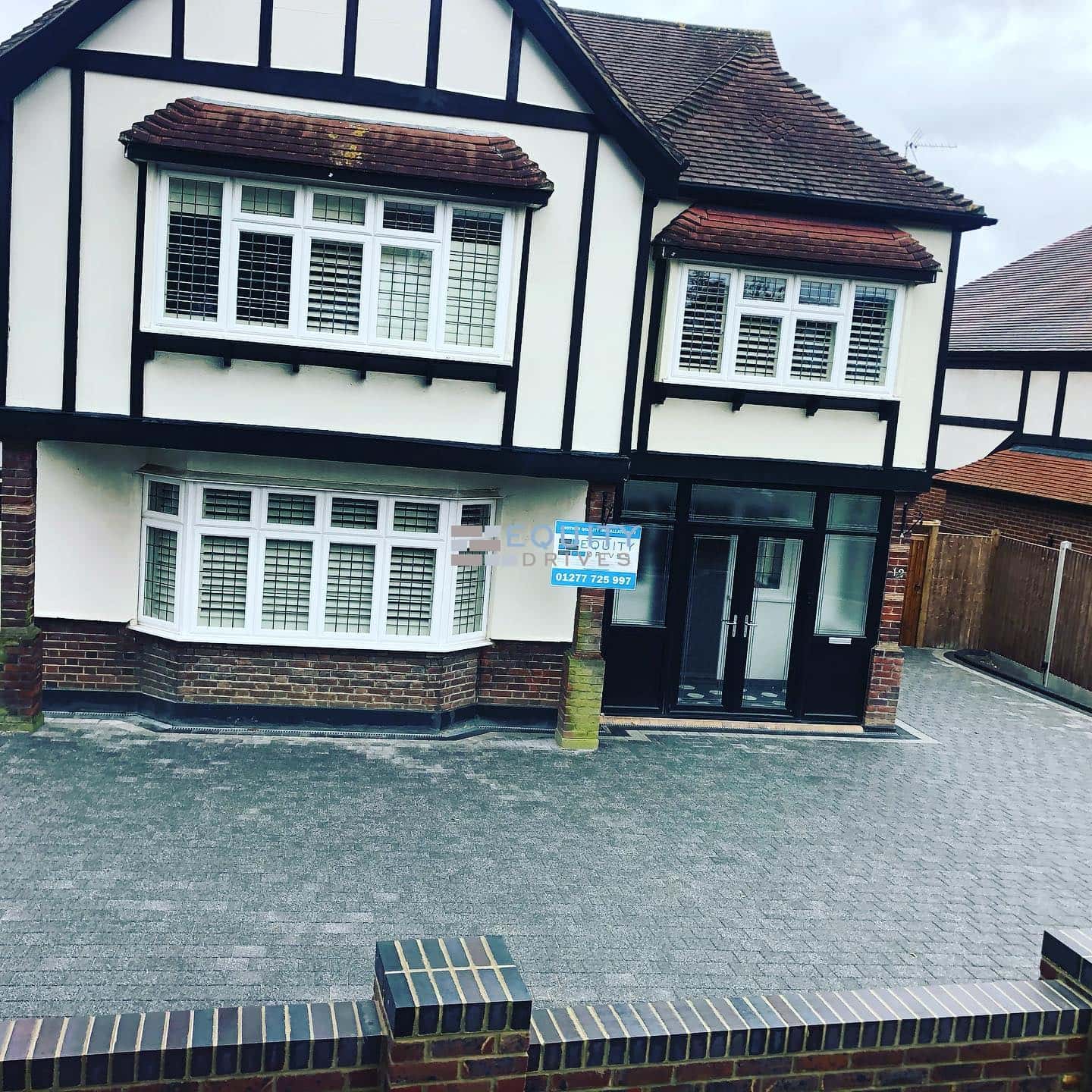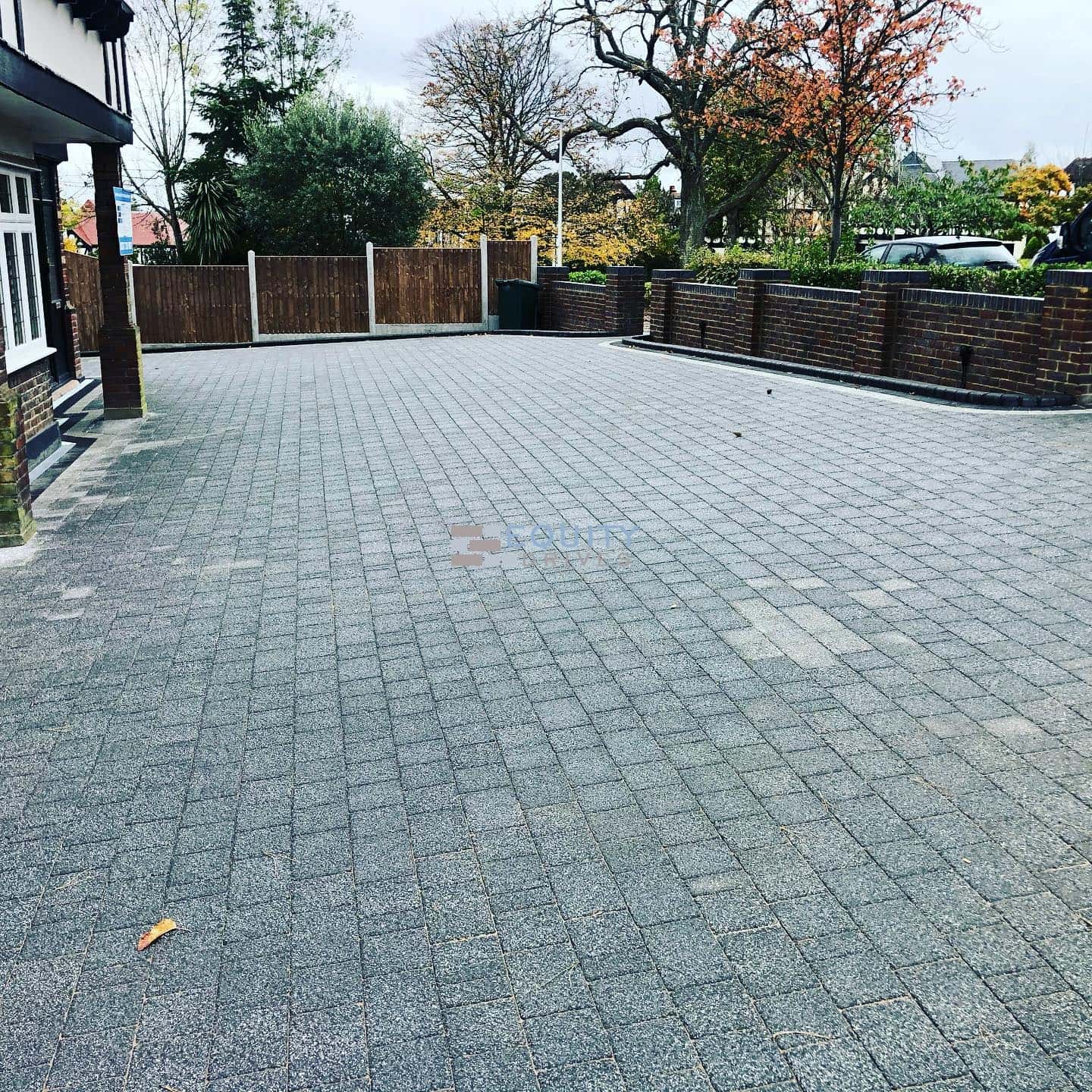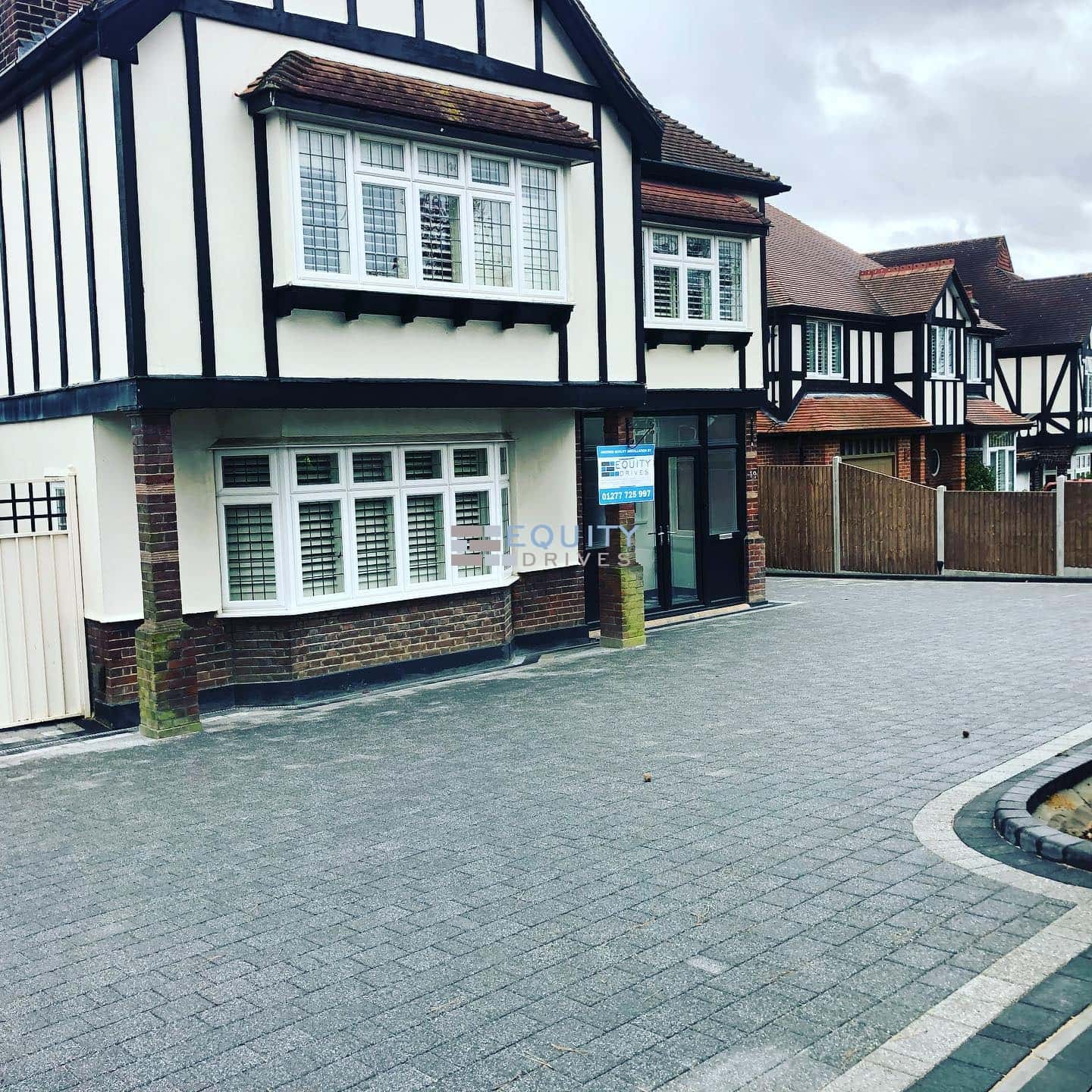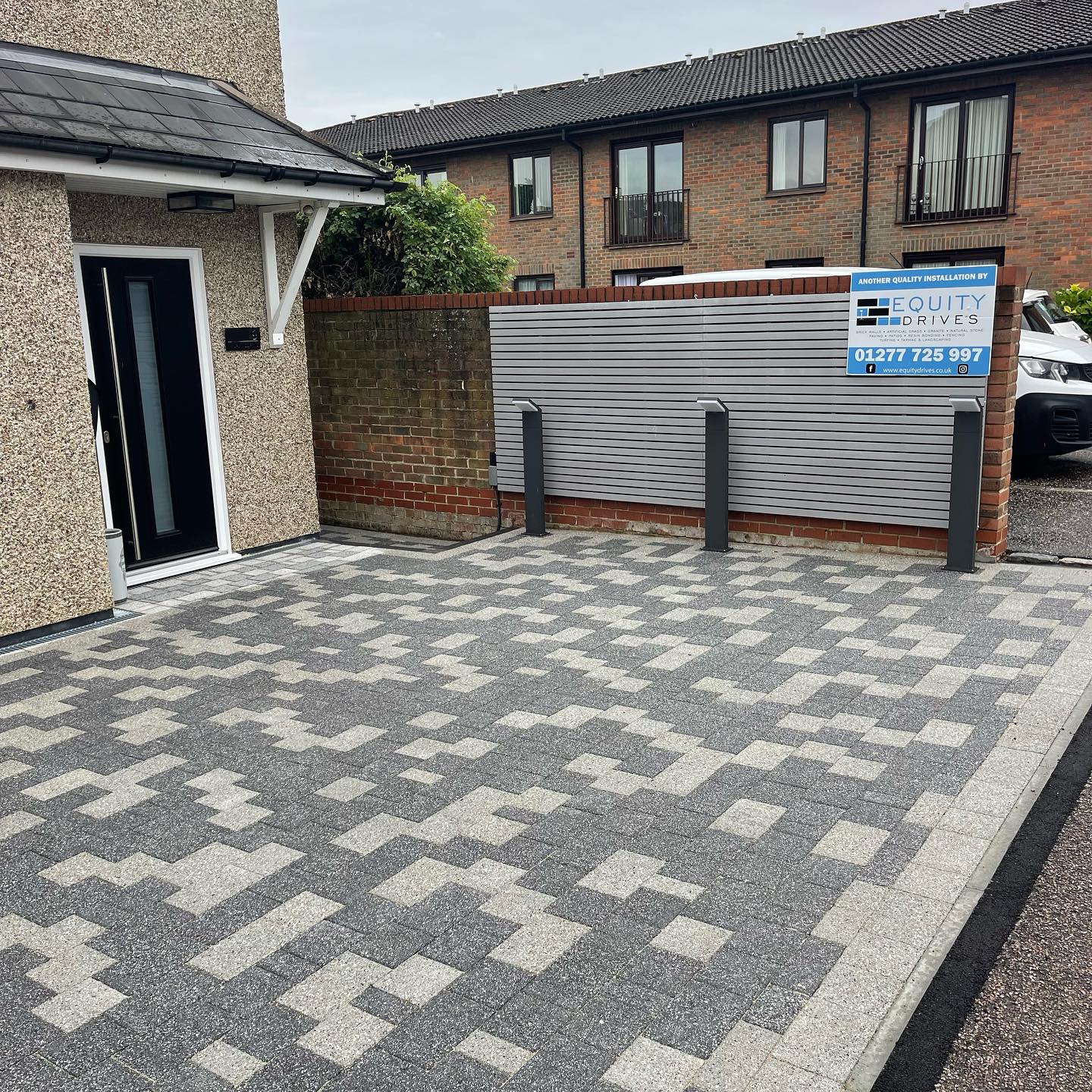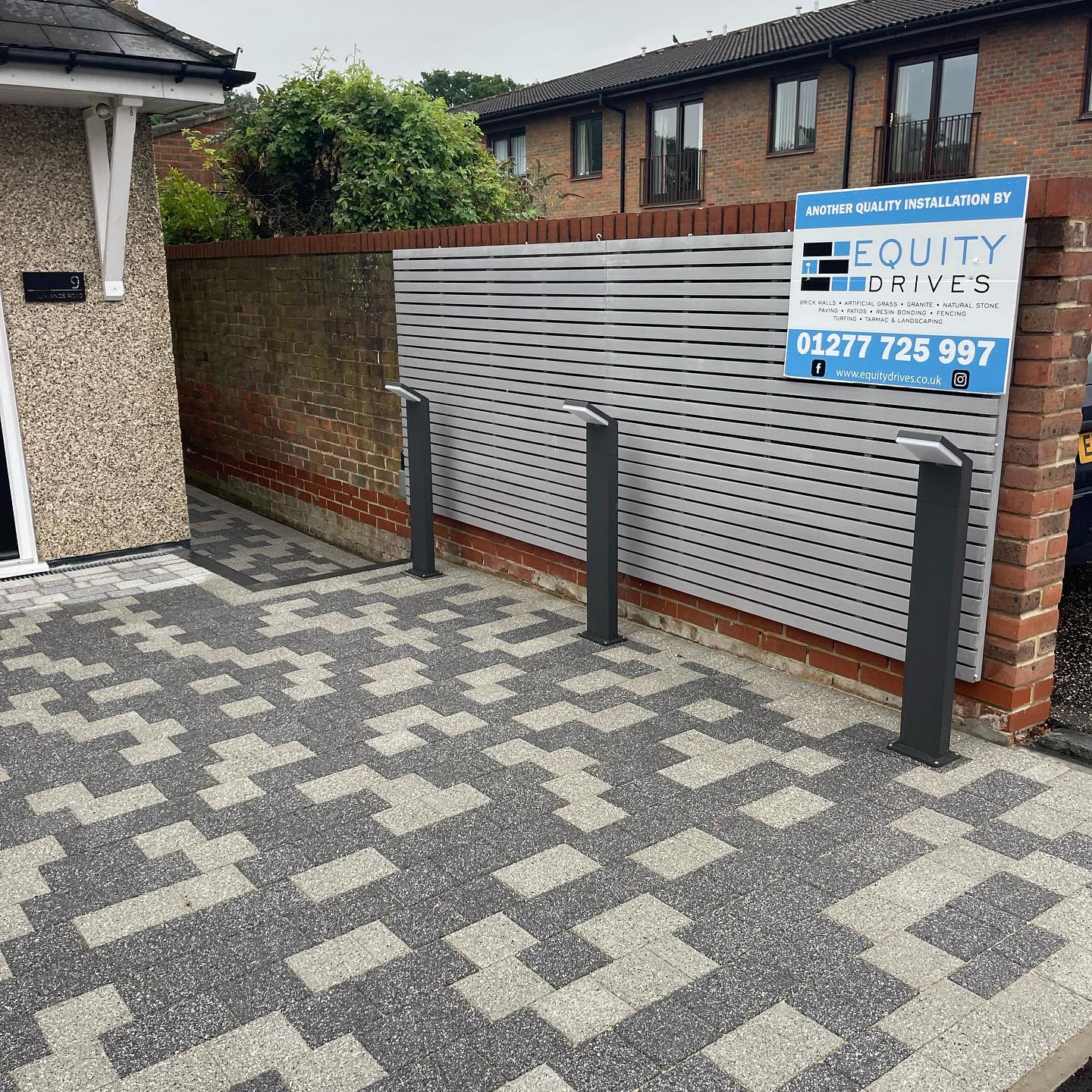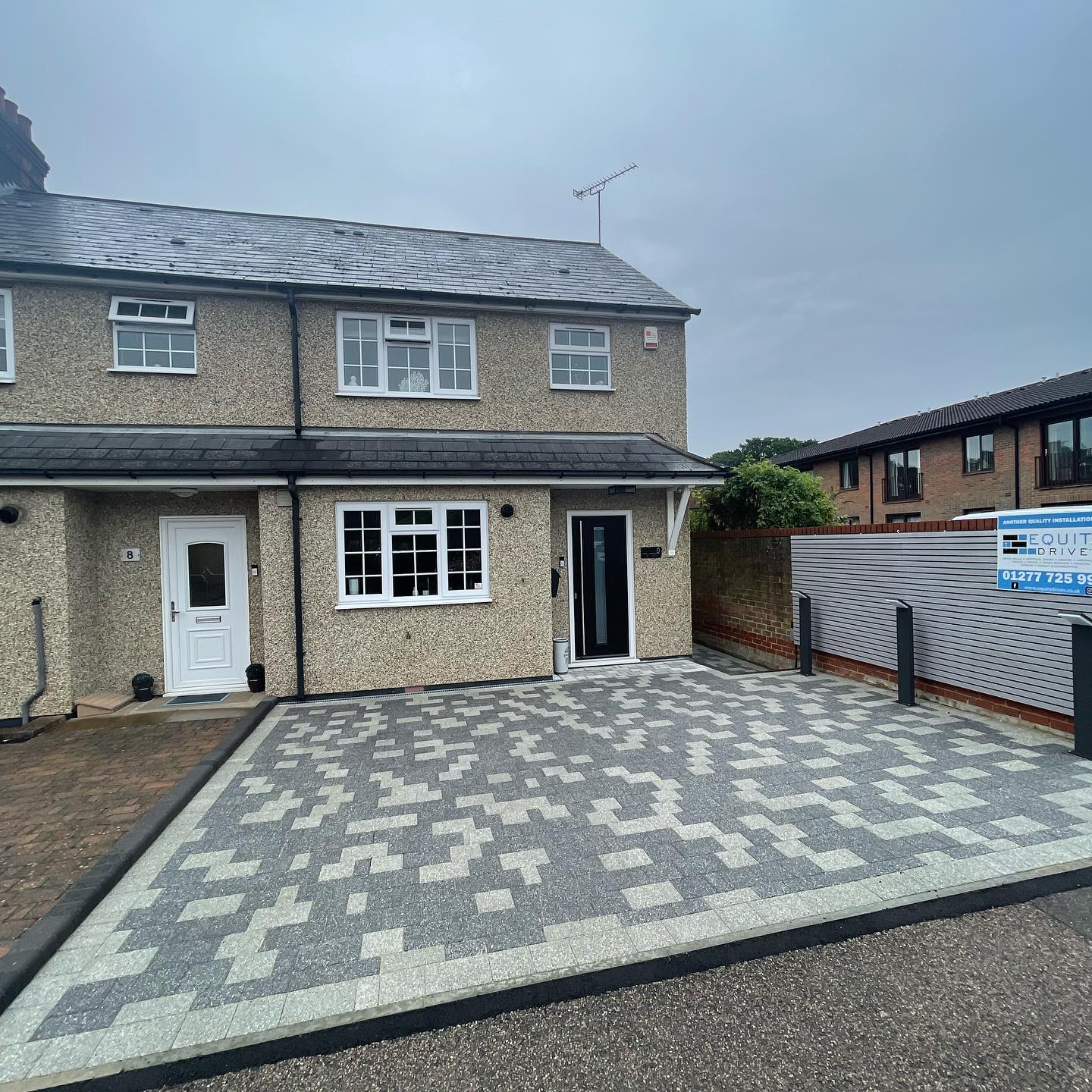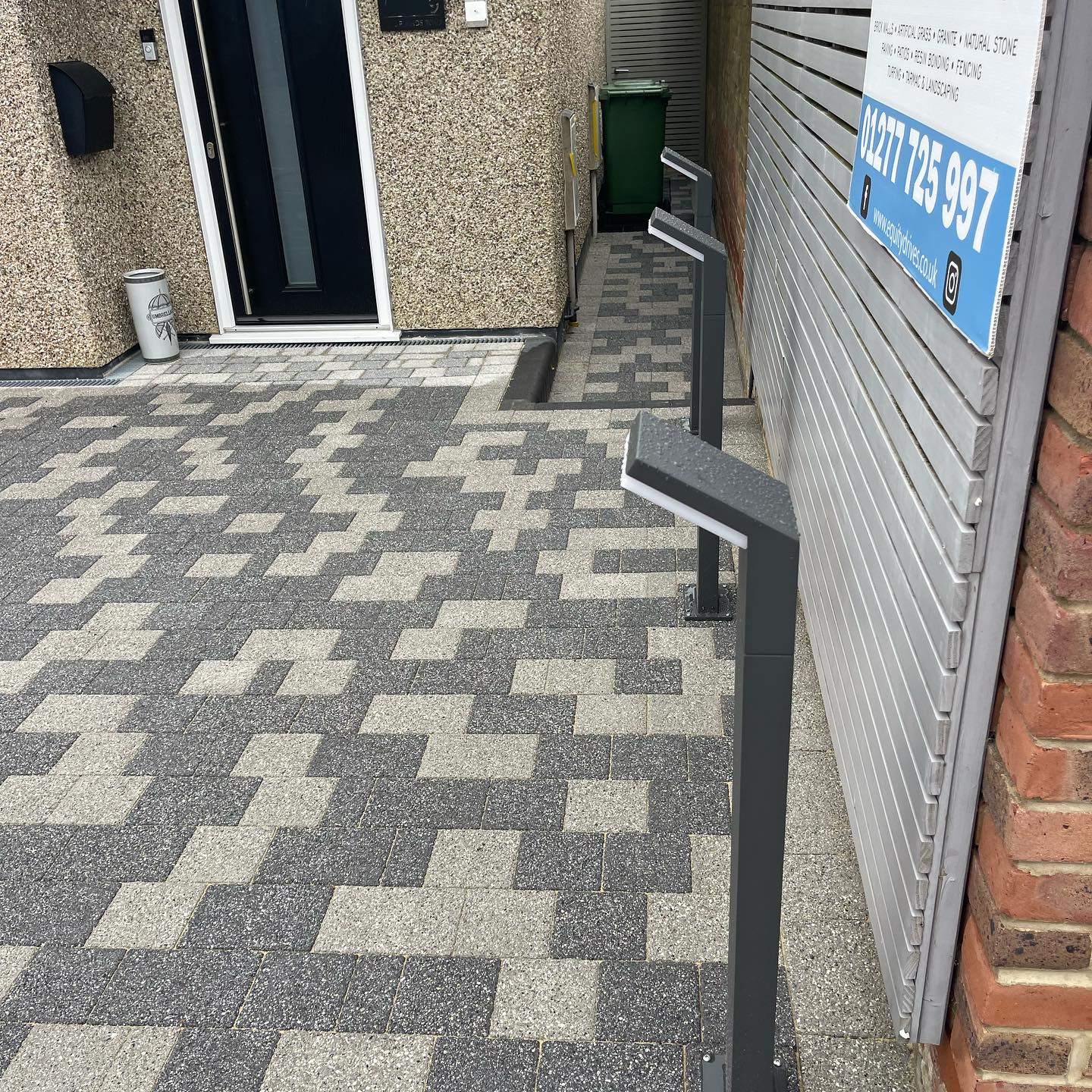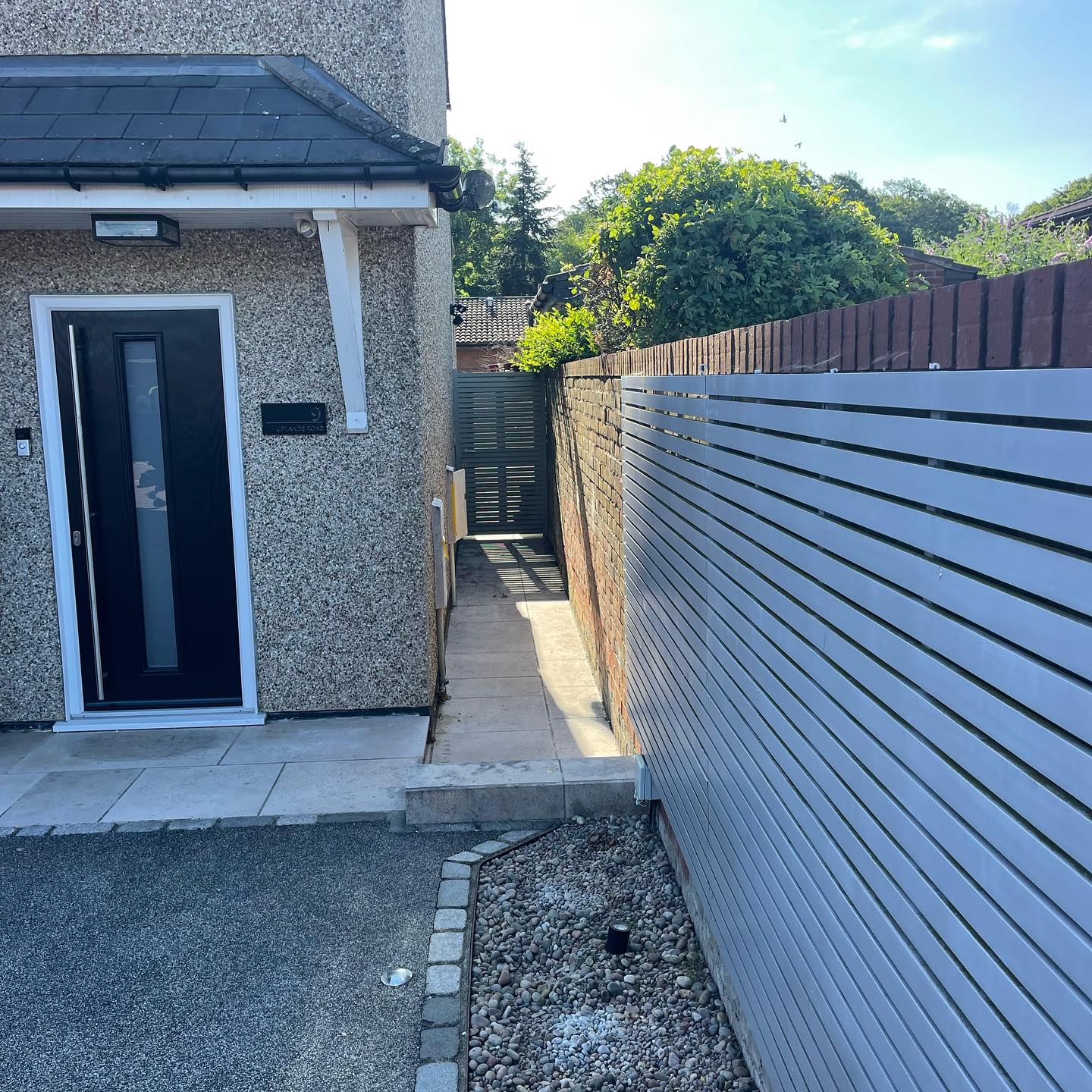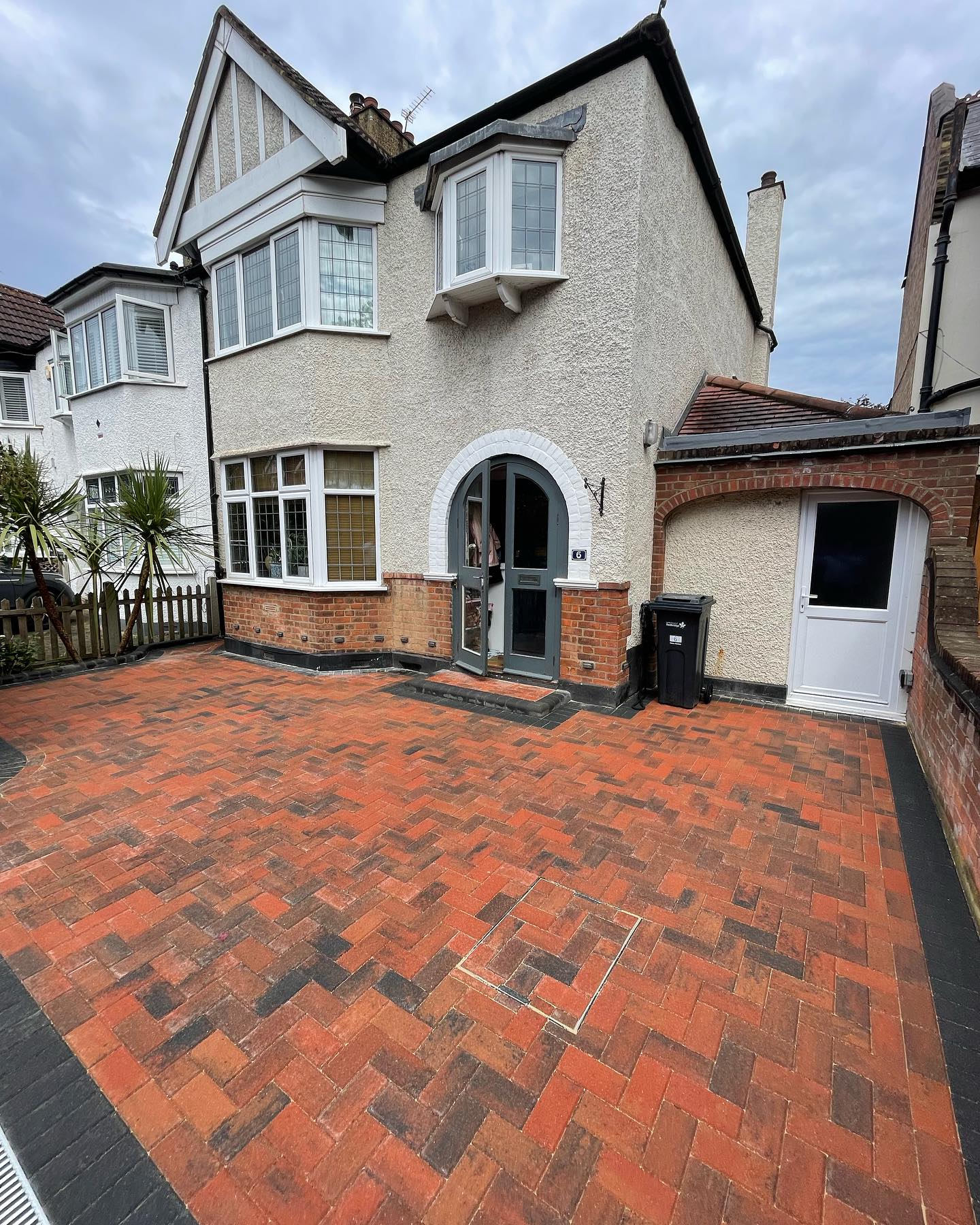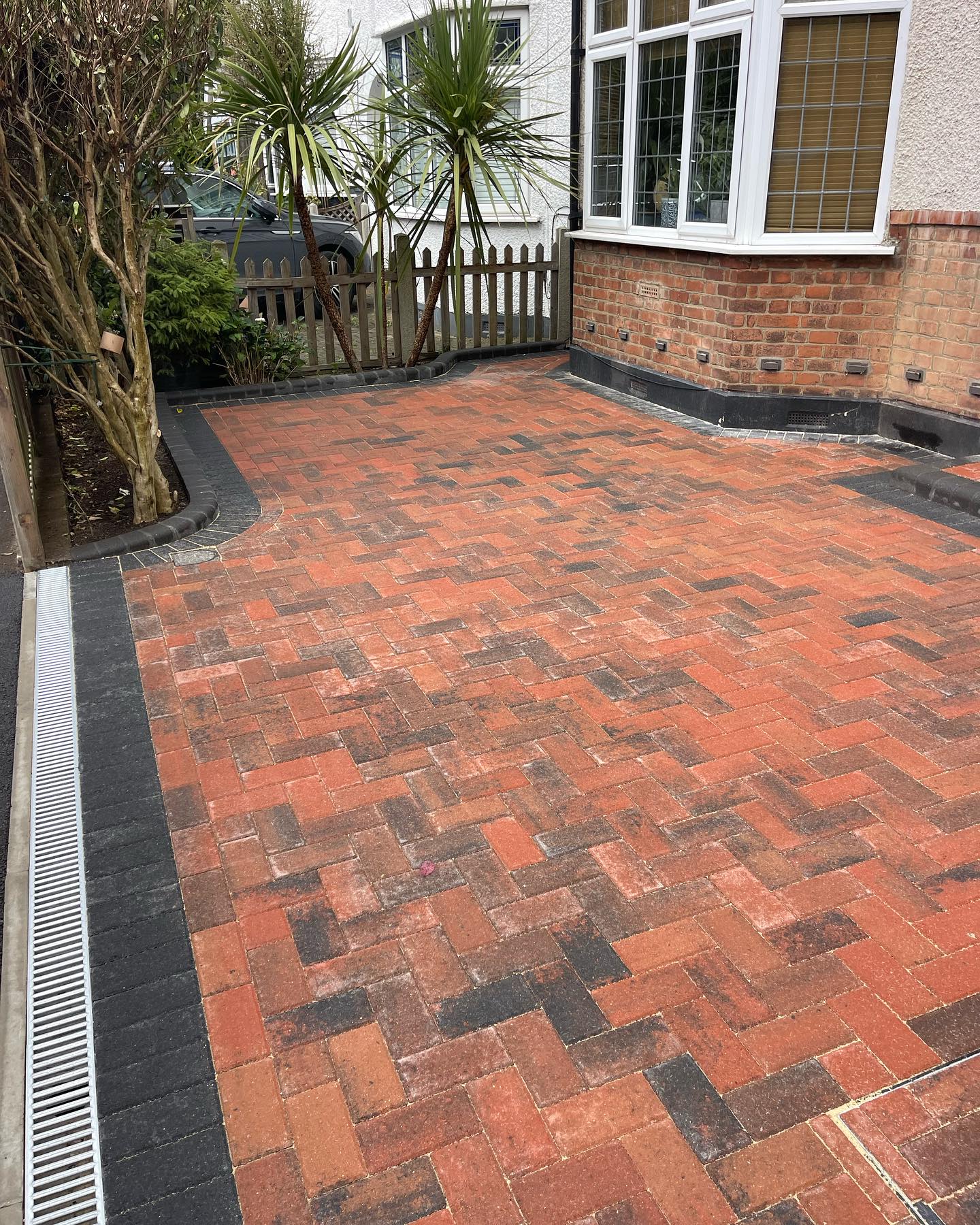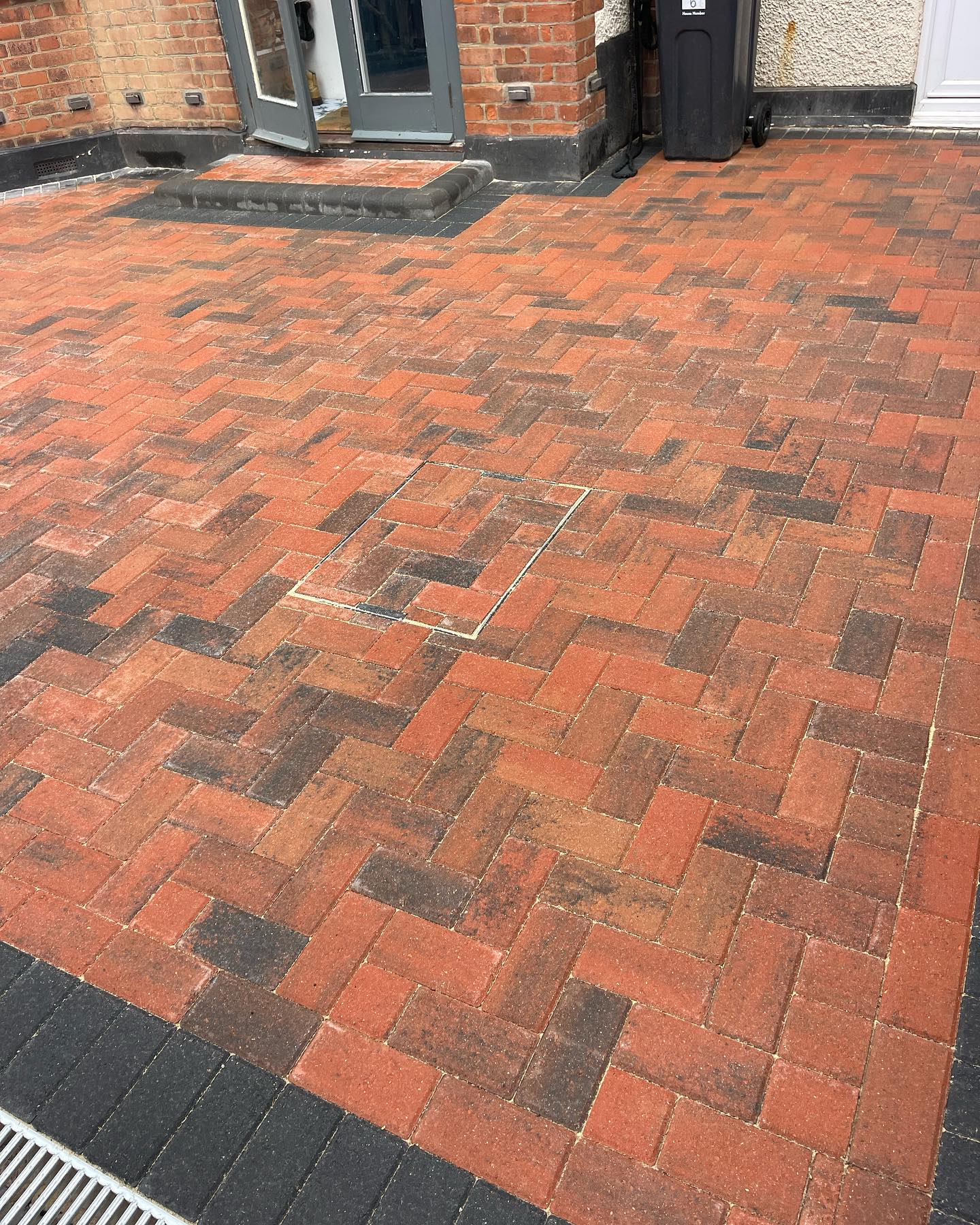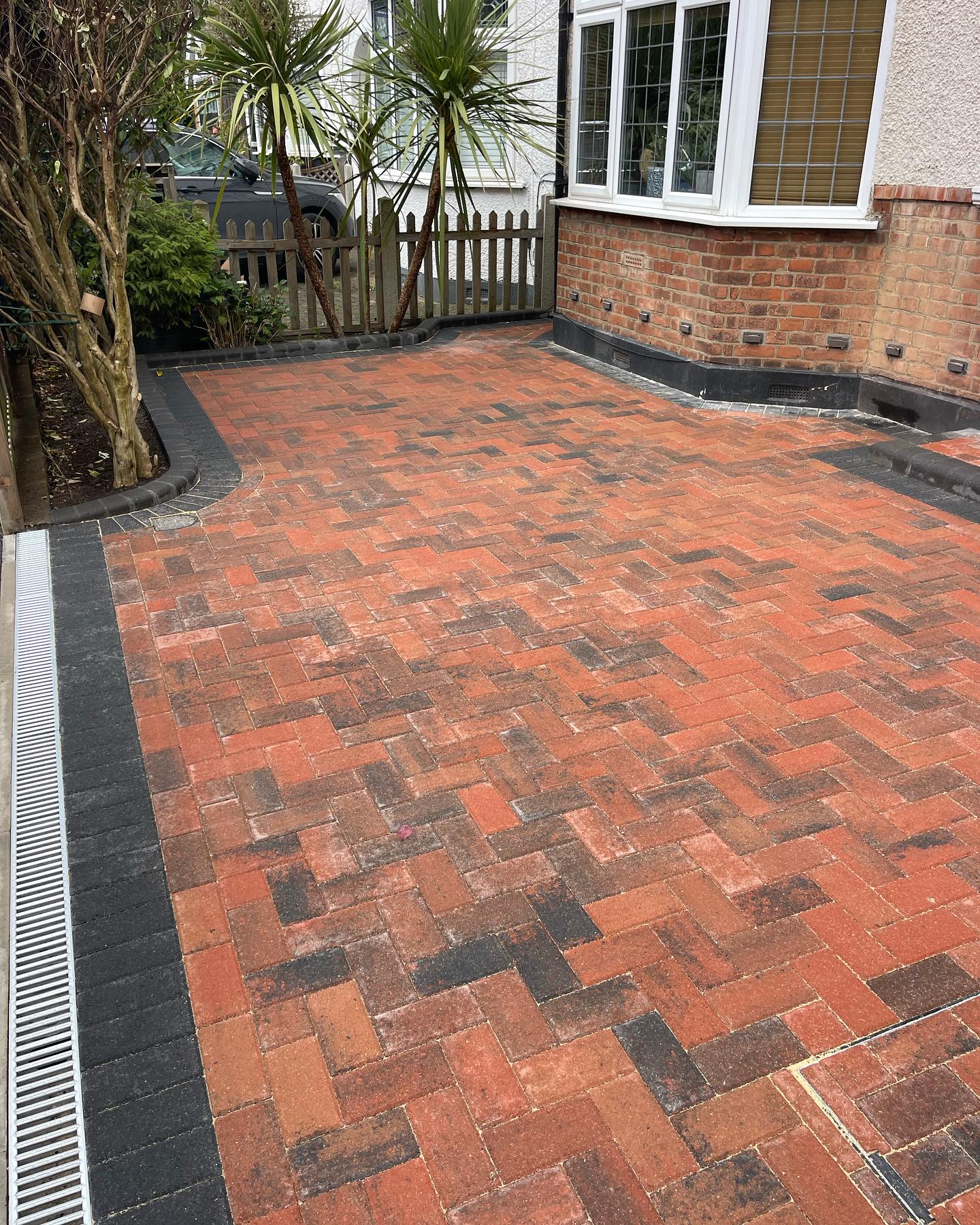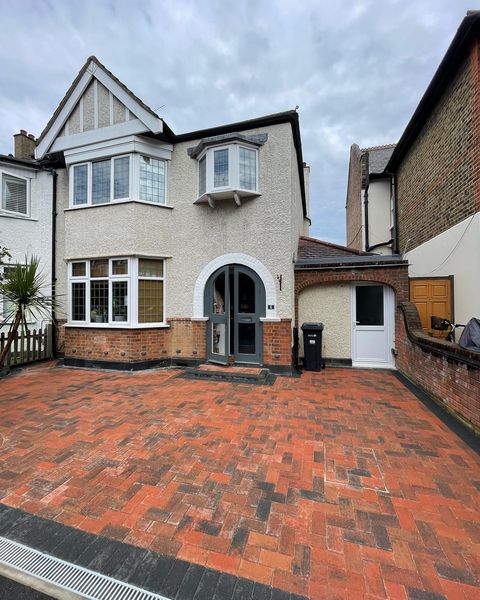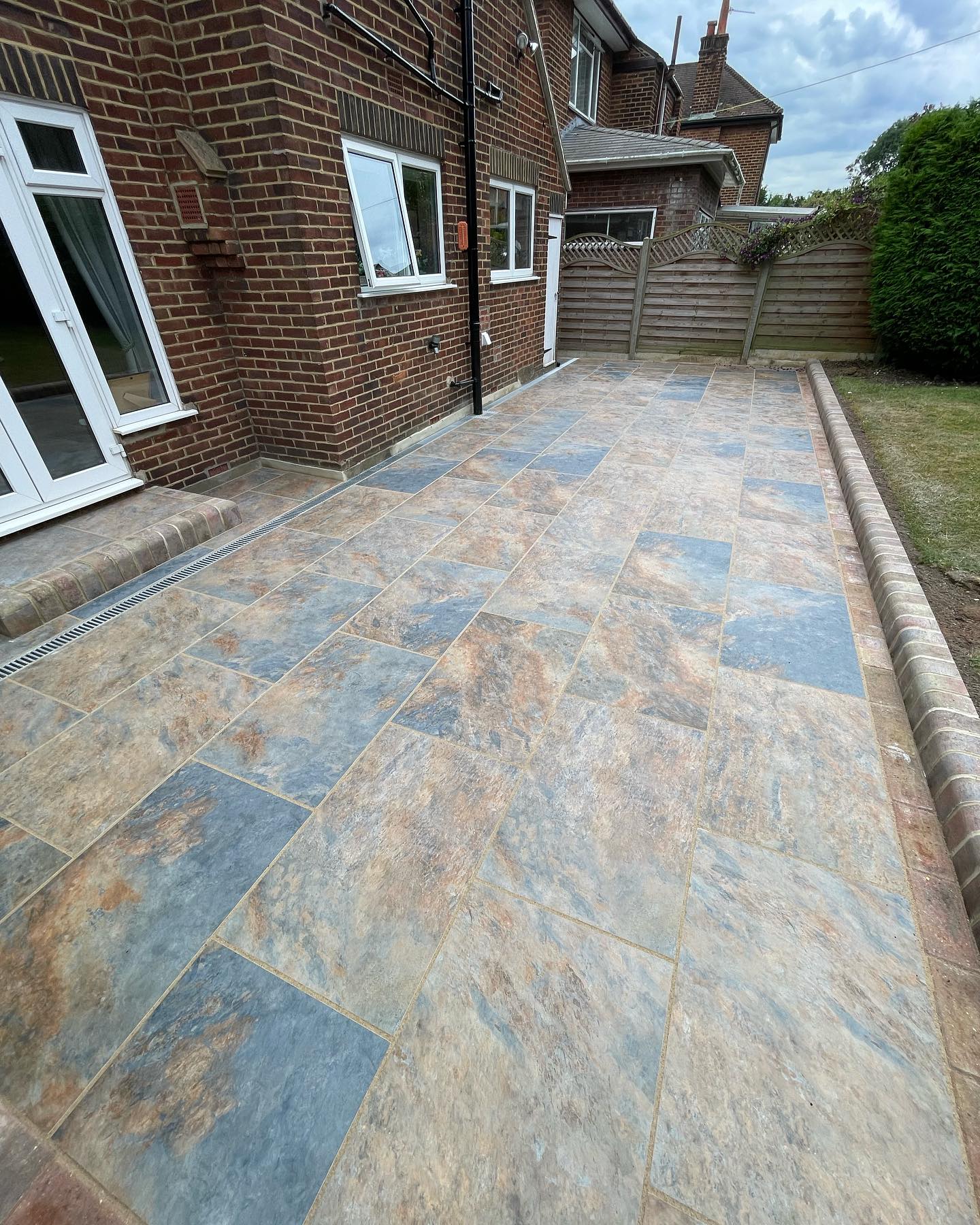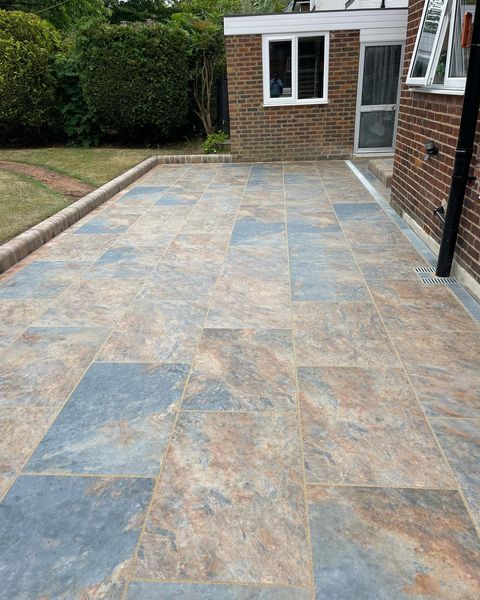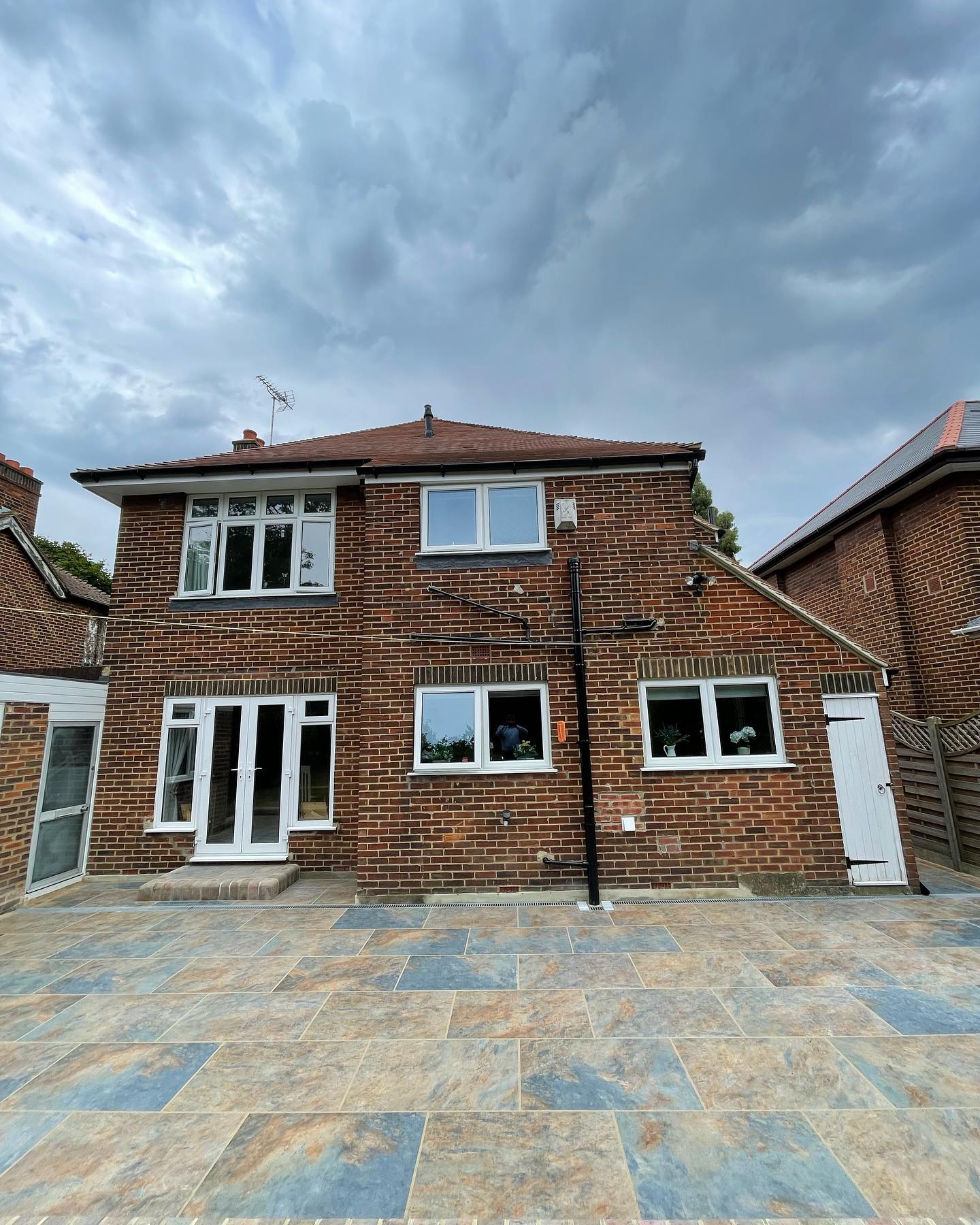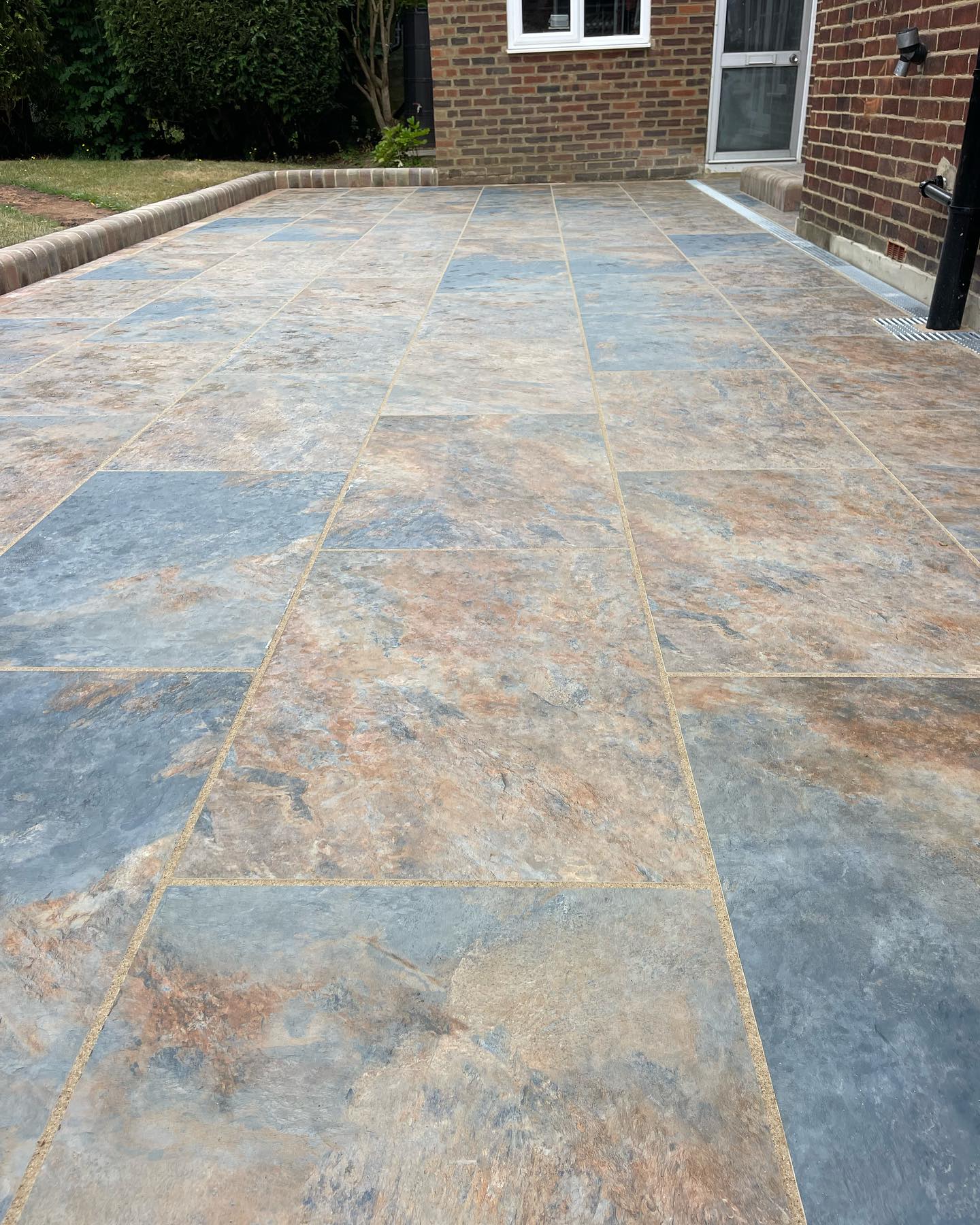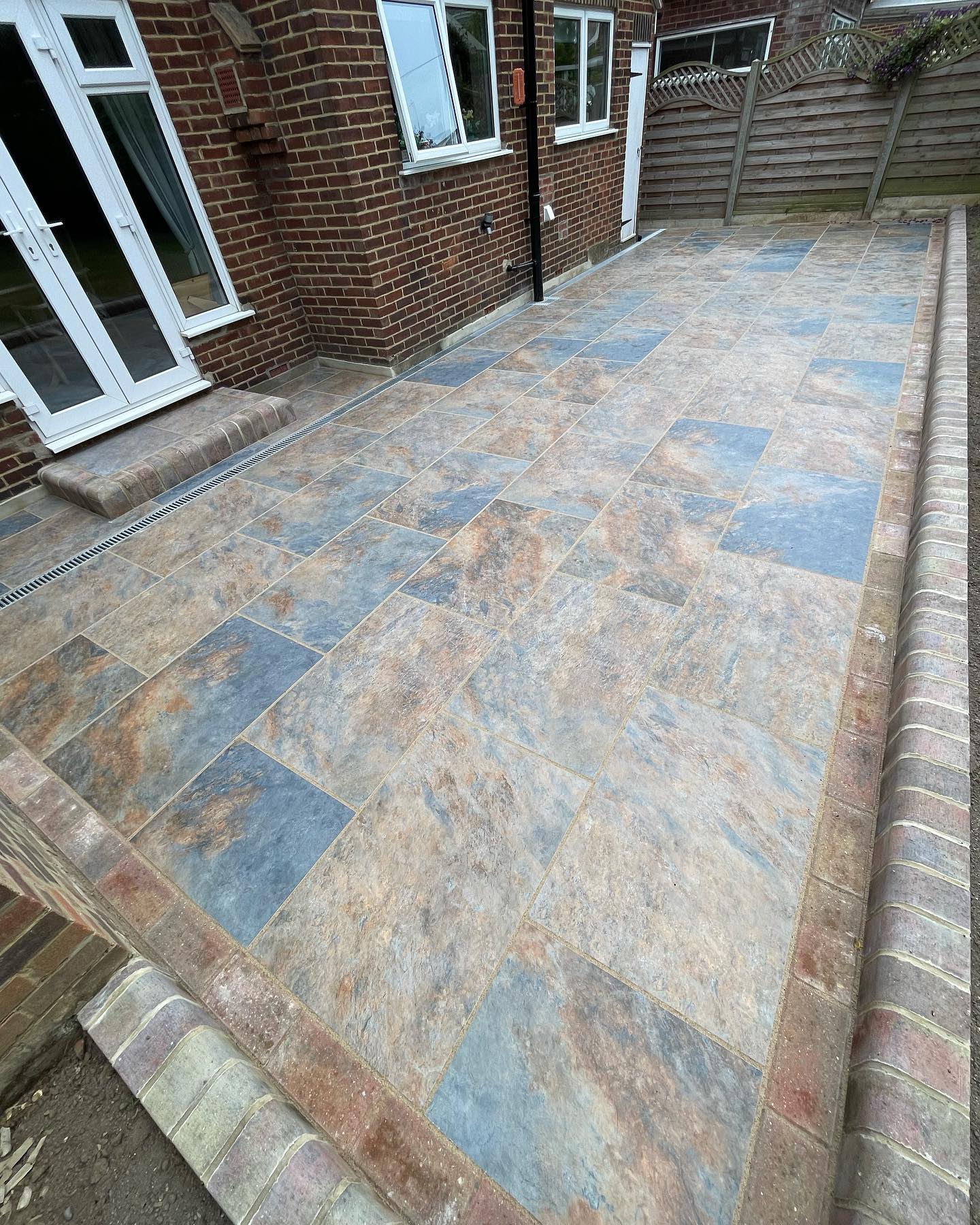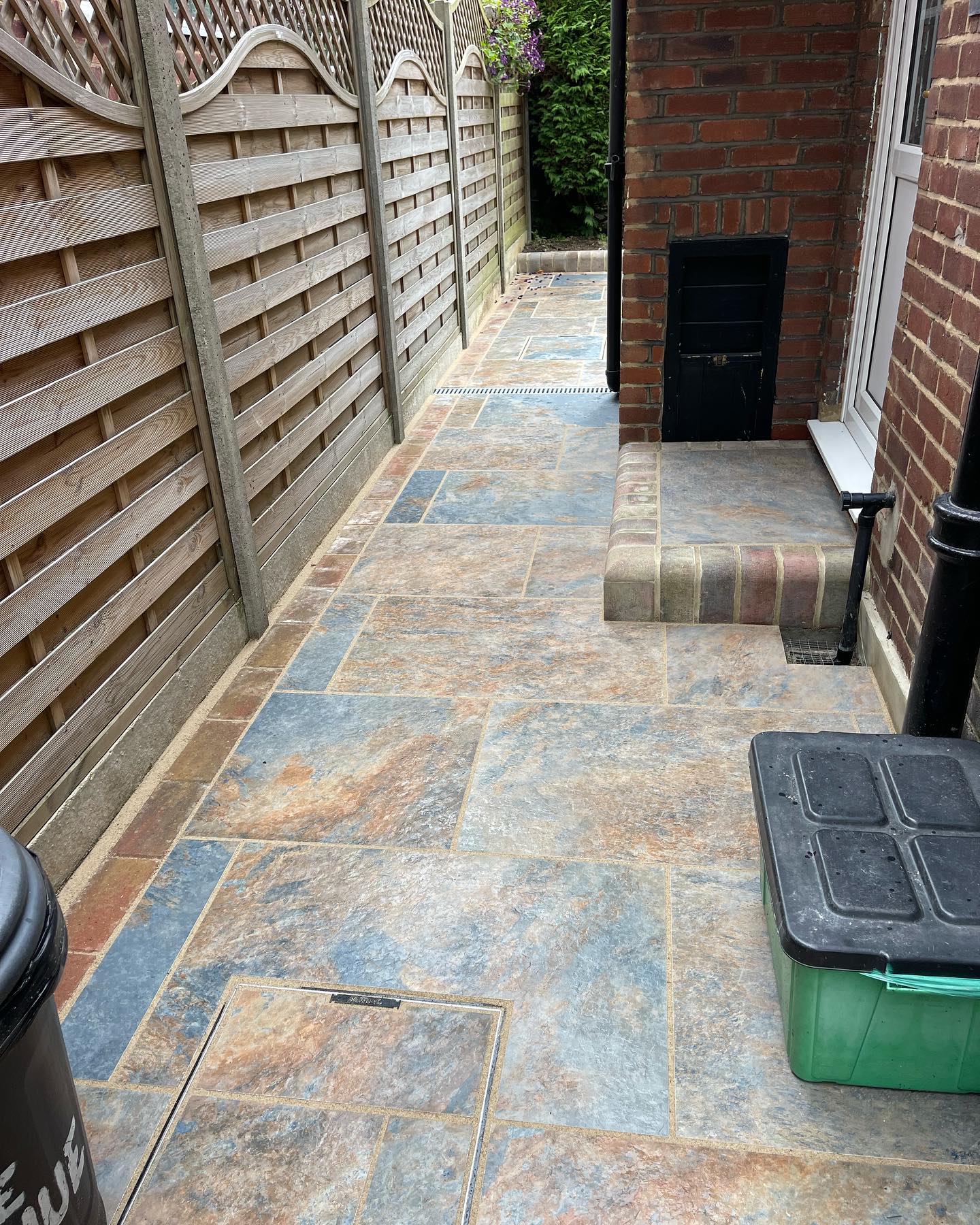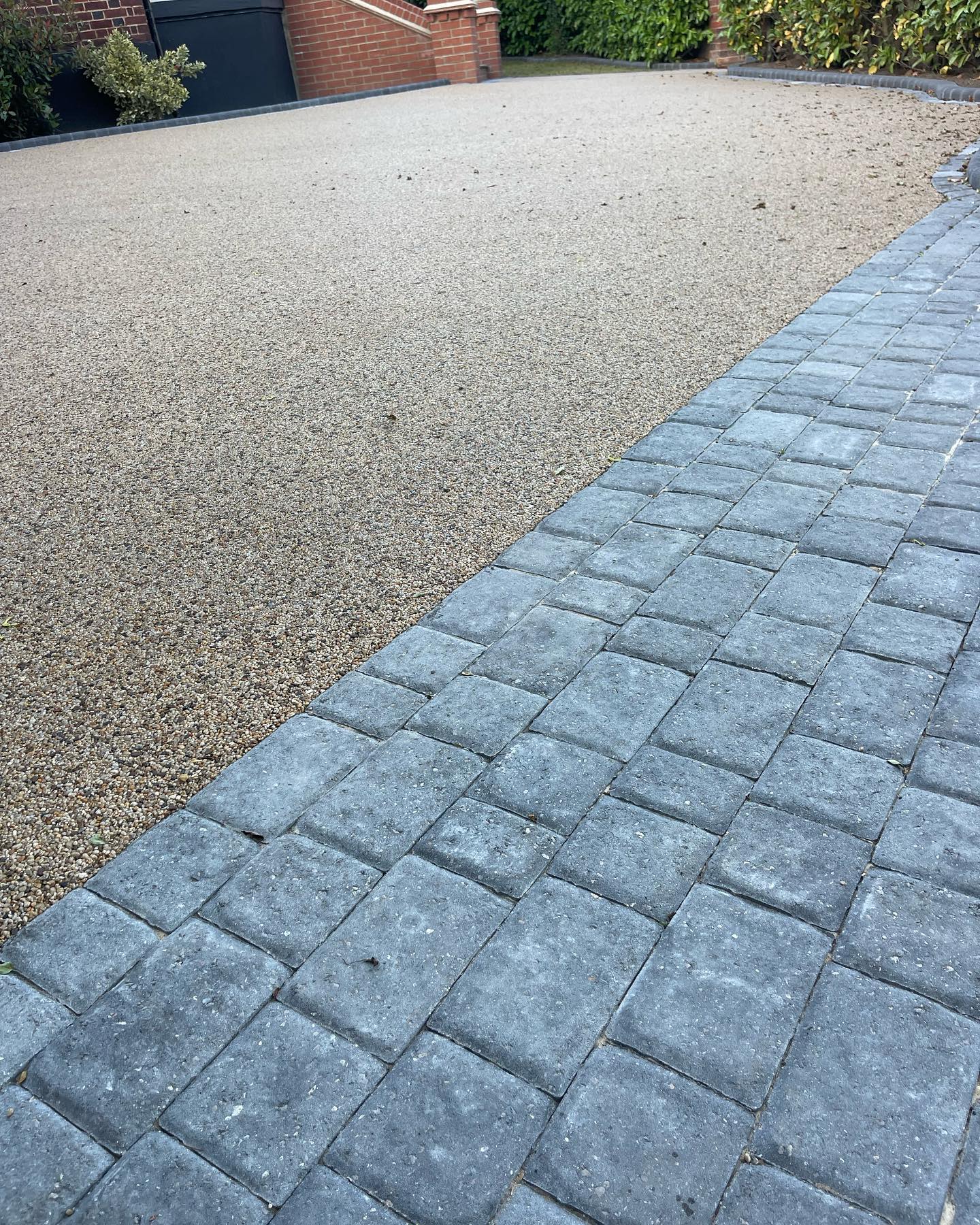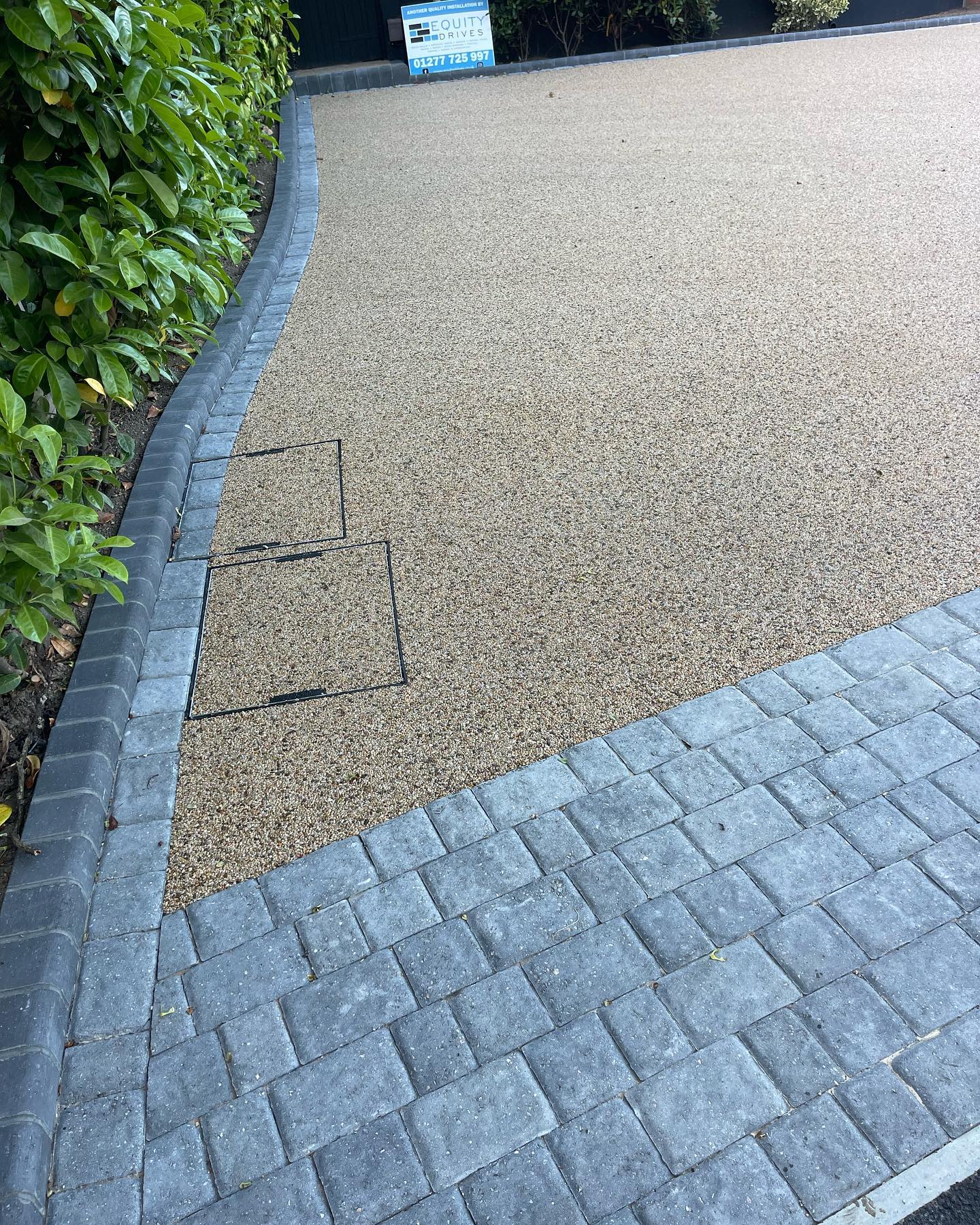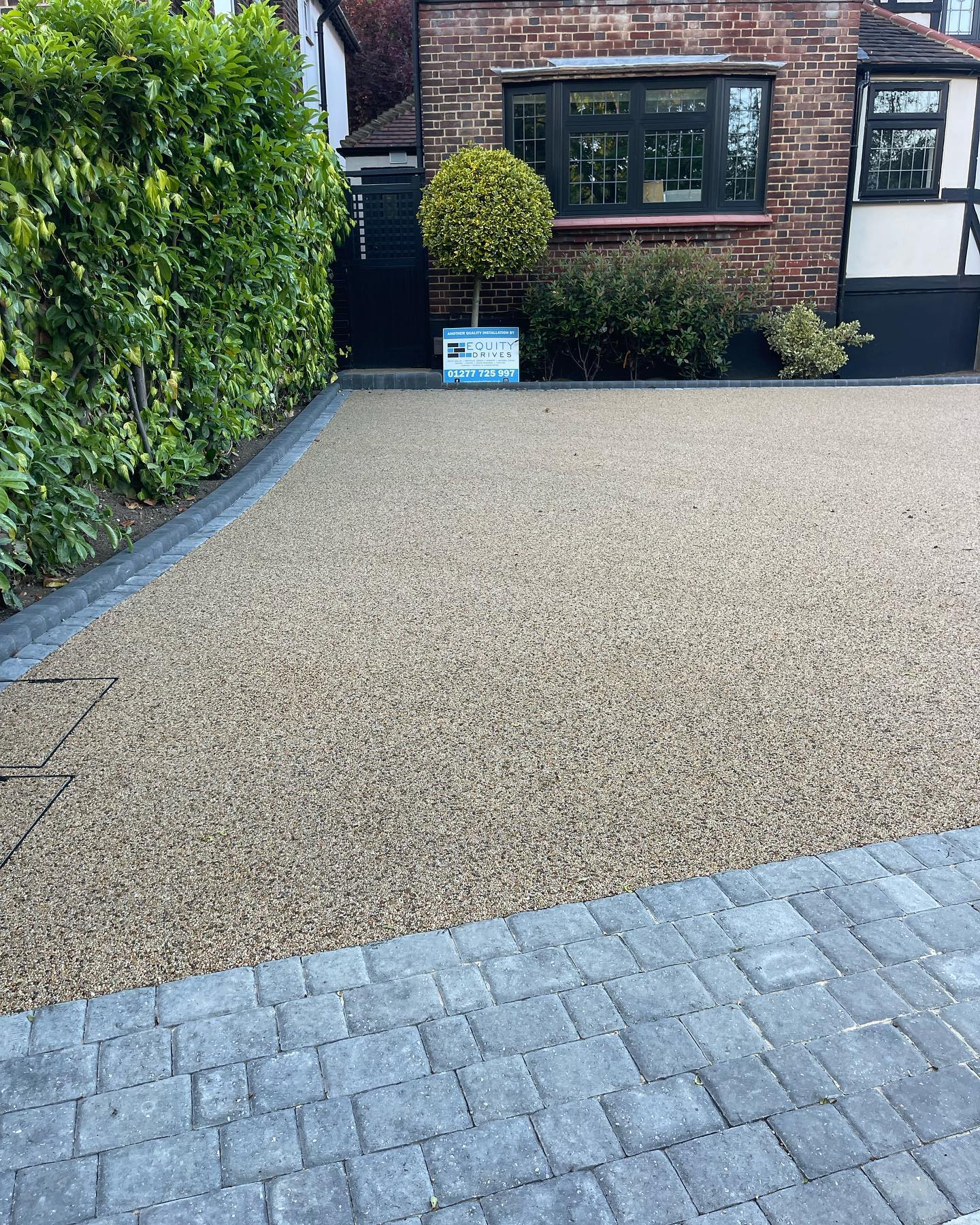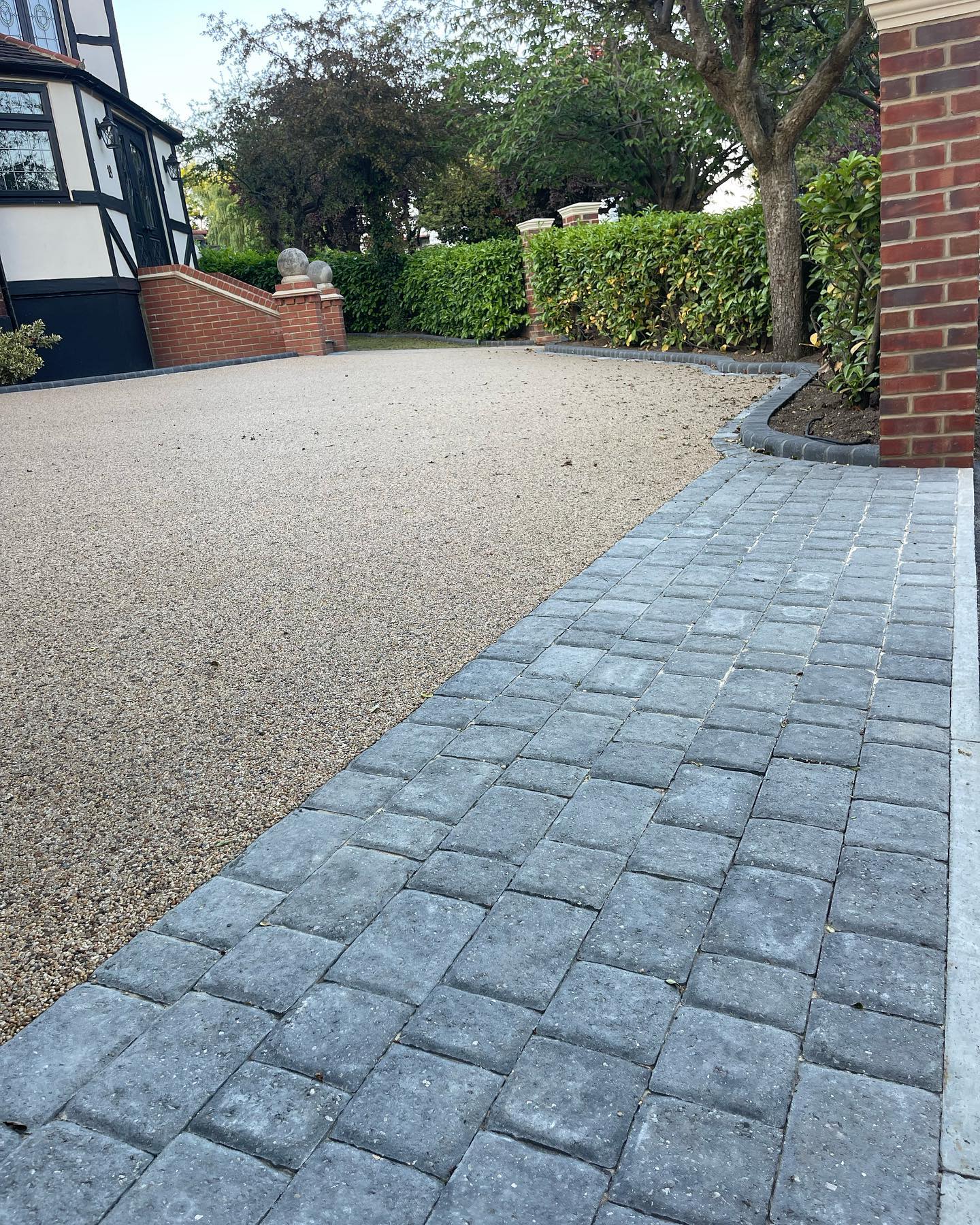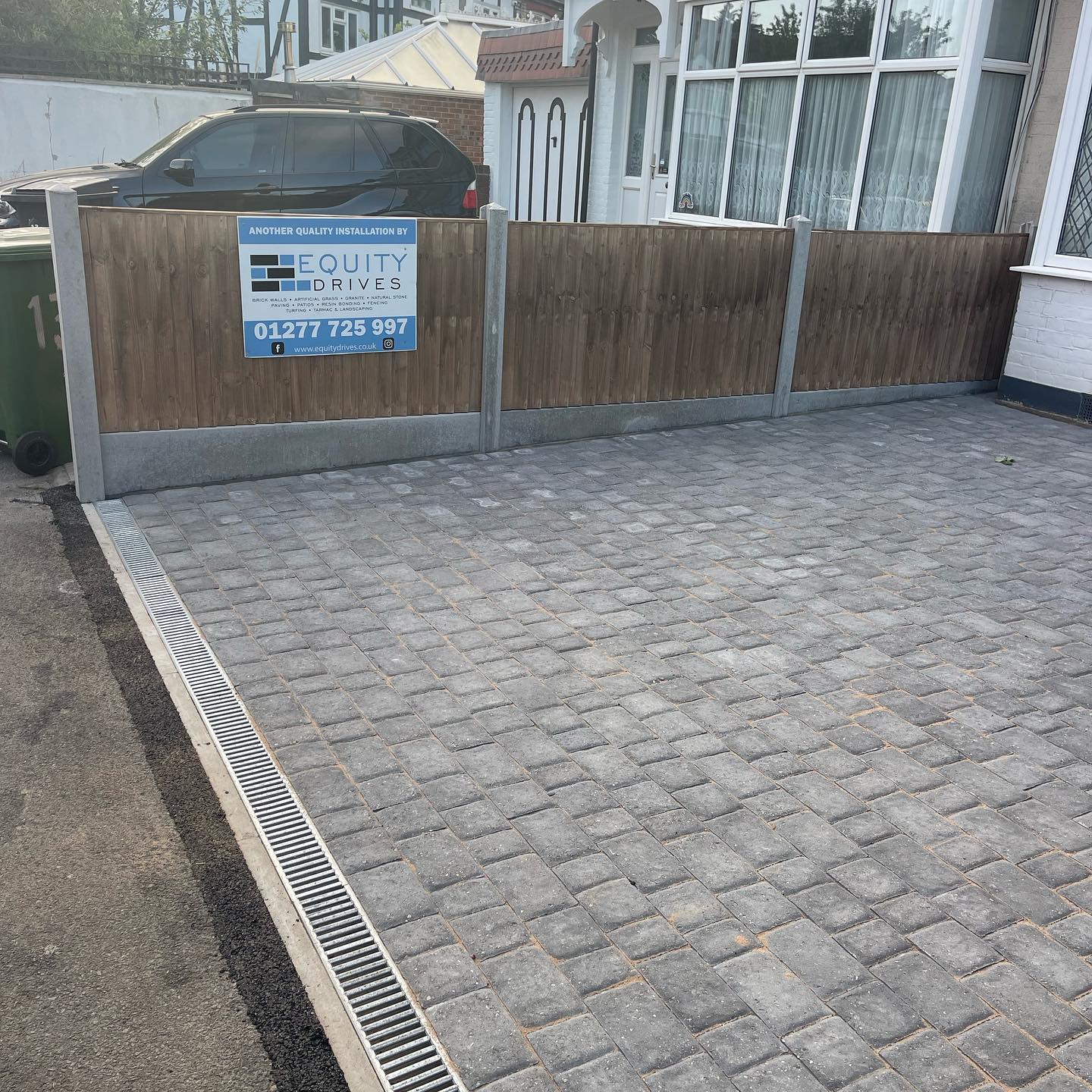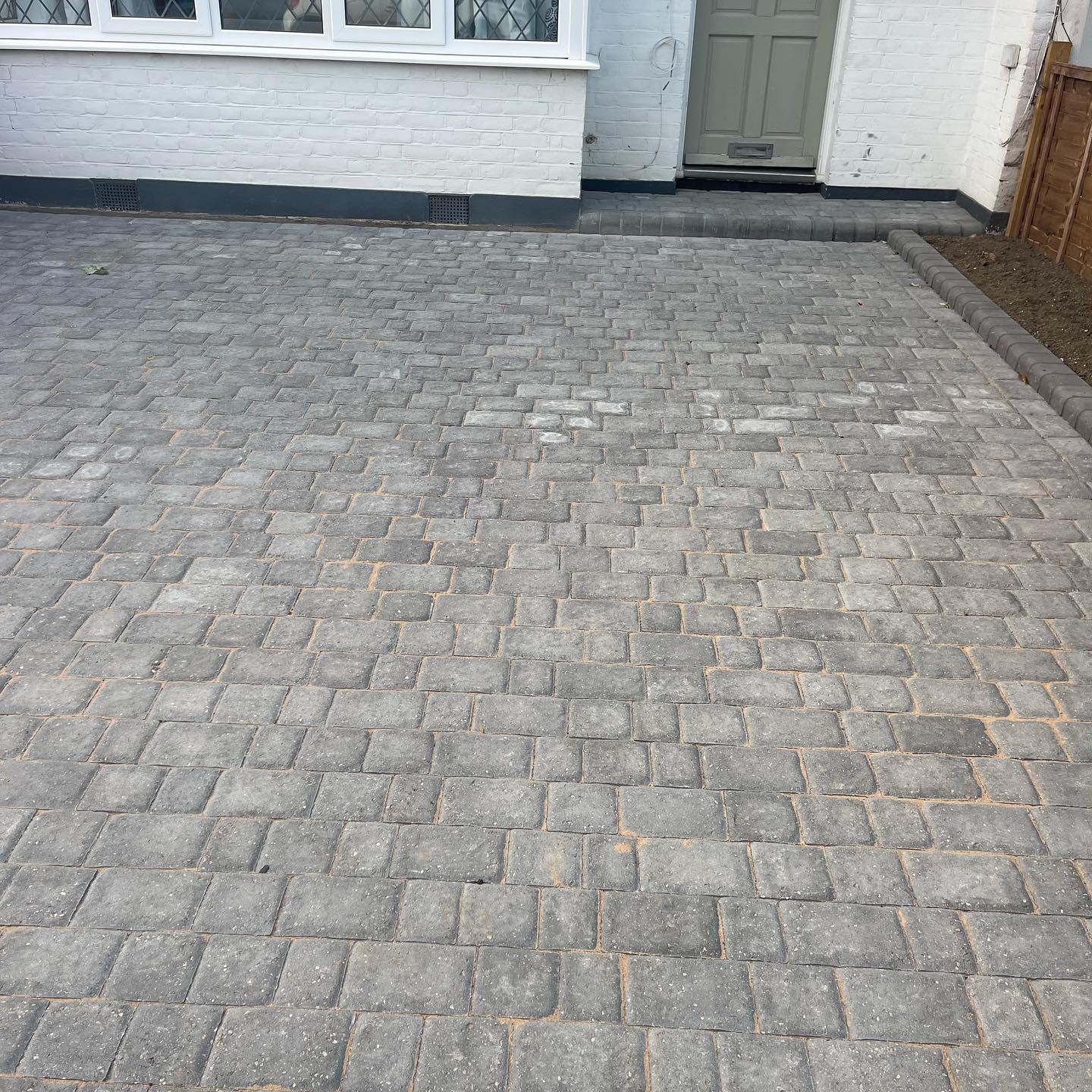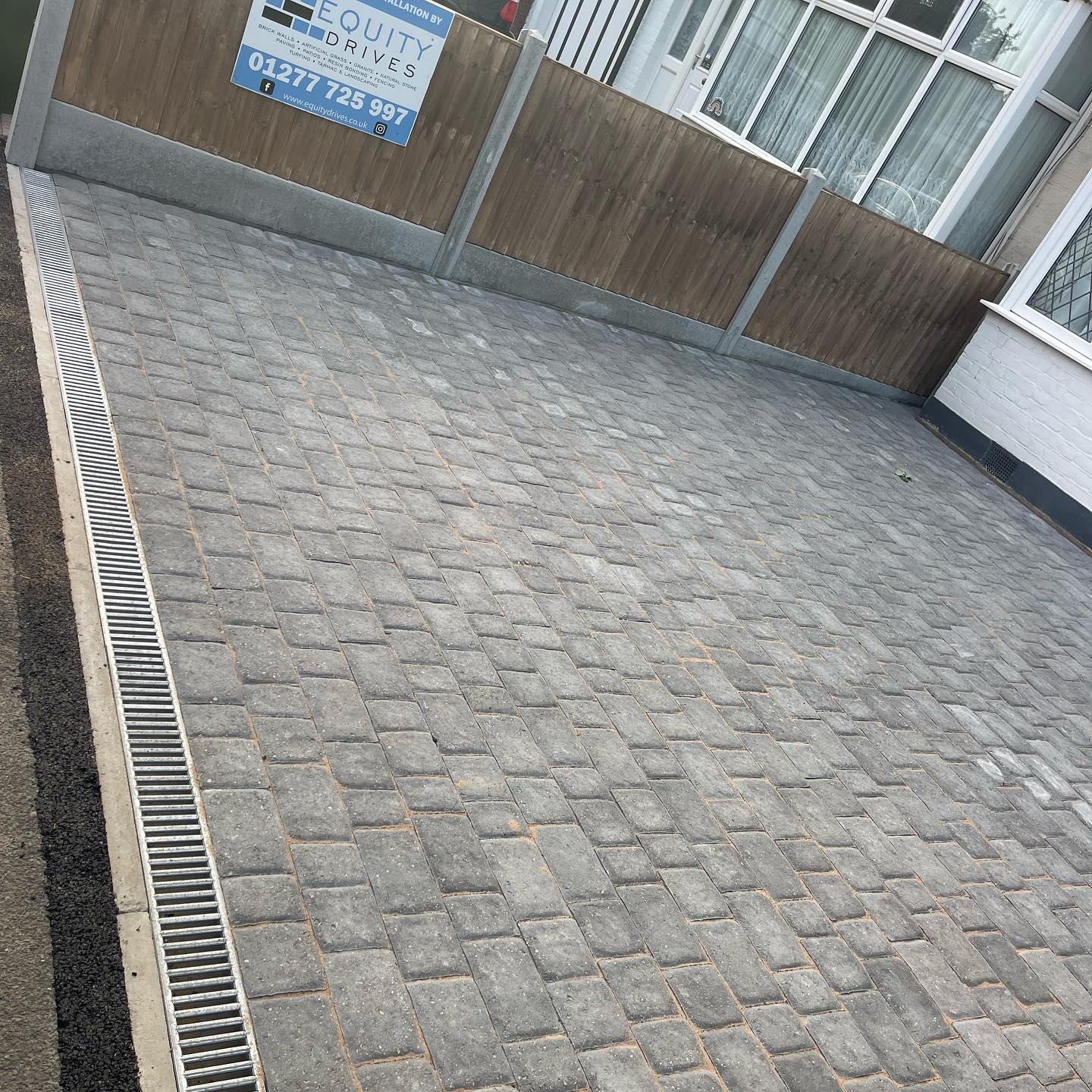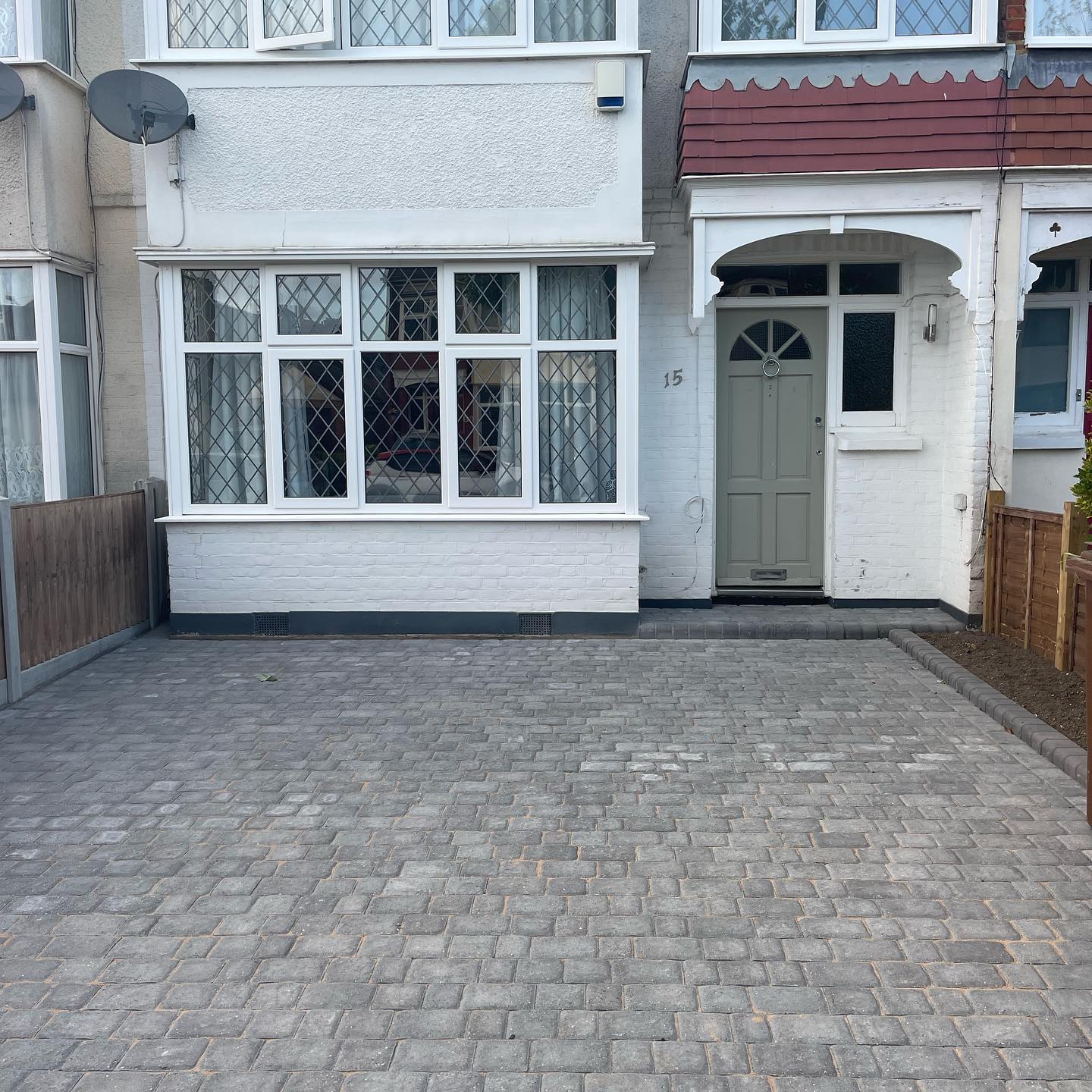Block Paving: Definition, Types, Materials, Patterns, and How to Lay It
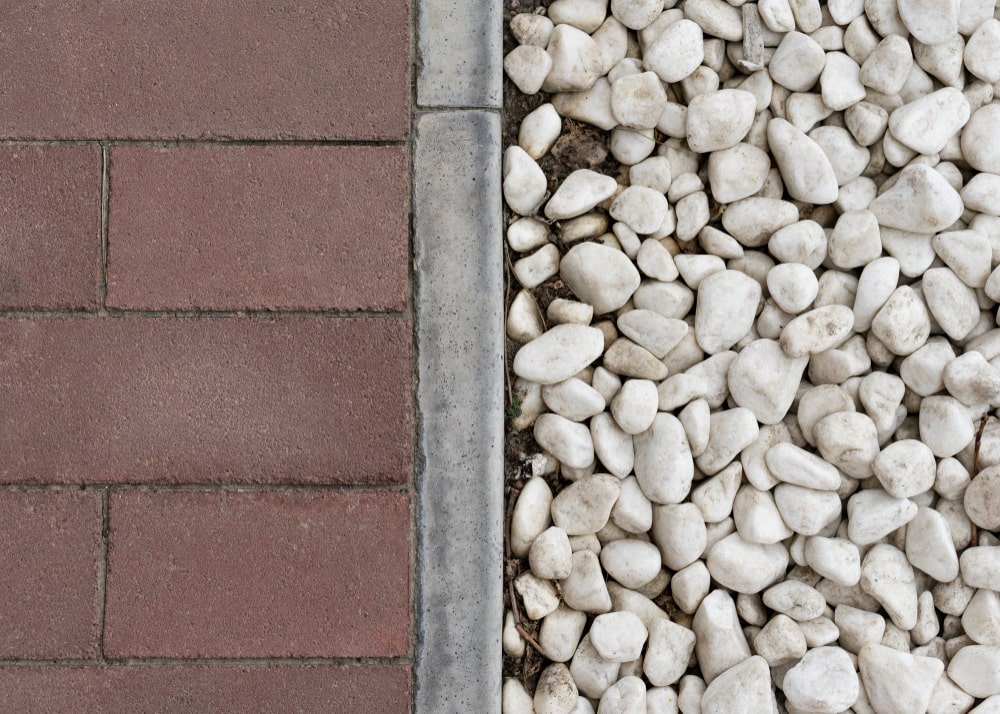
26 Sep 2025
Block paving is a versatile surface construction method that uses individual units, usually made from concrete, clay, or natural stone, to create durable and decorative pavements. It is widely used for driveways, patios, paths, and heavy-use areas because it combines strength, flexibility, and design variety.
Block paving can be classified by material (concrete, kiln-fired clay, natural stone, reclaimed units, and permeable paving), by finish (standard, tumbled, or decorative), and by laying patterns such as herringbone, stretcher bond, stack bond, basketweave, circular, and tegula. Special categories address specific needs, including domestic paving for homes, heavy-duty paving for industrial areas, and SUDS-compliant permeable systems for drainage management.
Installation requires the correct choice of sand layers and bedding, with clear differences between laying on sand, using sand and cement mixes, and full driveway construction methods. Each step ensures the paved surface remains stable, level, and long-lasting.
Table of Contnets
- What is Block Paving?
- What are the Types of Block Paving?
- What are the types of Block Paving by Material?
- What are the types of Block Paving by Finish or Style?
- What are the types of Block Paving by Laying or Bond Pattern?
- What are the types of Block Paving by Special Considerations?
- What sand is used for block paving?
What is Block Paving?
Block paving, sometimes called brick paving, is a surface construction method where individual blocks or bricks are laid in a defined pattern over a prepared sub-base. From a scientific perspective, block paving functions as an interlocking system: the load applied to one block transfers laterally through friction and jointing material, distributing stress across the entire paved surface. This makes block paving structurally efficient and resistant to displacement under vehicular and pedestrian use. It is most commonly used for driveways, patios, pedestrian walkways, and commercial surfaces because of its durability, load-bearing capacity, and ease of maintenance.
What are the Types of Block Paving?
There are many types of block paving which are defined by materials, finishes, and laying patterns such as:
By Material
- Concrete blocks
- Clay bricks
- Natural stone blocks
- Reclaimed block paving
- Permeable block paving
By Style/Finish
- Standard / Regular blocks
- Tumbled / Aged blocks
- Decorative / Textured blocks
By Laying Pattern
- Herringbone pattern
- Stretcher bond pattern
- Basket weave pattern
- Stack bond
- Circular / radial / geometric patterns
- Tegula / mixed size pattern
Special Considerations
- Domestic / standard block paving
- Heavy-duty / industrial block paving
- Permeable / SUDS-compliant paving
This combination of material choice, finish, and pattern allows block paving to be engineered for both structural performance and visual design in residential and commercial environments.
What are the types of Block Paving by Material?
1. Concrete blocks
Concrete blocks used in block paving are precast masonry units made from a mixture of cement, aggregates such as sand and gravel, and water. Once cured, these units form a dense composite with compressive strength typically ranging between 20–40 MPa, depending on mix design and manufacturing standards. Their scientific classification is as load-bearing or non-load-bearing units based on structural performance. The uniformity of size and shape allows them to interlock effectively, distributing applied loads across a paved surface through jointing material and friction.
Pros:
- The most common and cost-effective option. Available in many shapes, colours, and finishes.
- Consistent strength across manufactured units.
- Easy to replace individual damaged blocks.
- Permeable variants help with water drainage.
Cons:
- Surface wear under heavy traffic conditions.
- Colour fading over time.
- Vulnerable to freeze–thaw damage in colder regions.
- Requires maintenance to control moss and weed growth in joints.
Concrete block paving is widely used for domestic driveways, car parks, footpaths, and patios. Its balance of cost-efficiency and structural reliability makes it a preferred choice for residential projects, housing developments, and commercial forecourts where load-bearing capacity and replaceability are important.
2. Clay Pavers (Kiln-fired)
Clay pavers are units produced from natural clay minerals shaped into bricks and hardened through high-temperature firing in kilns. The firing process alters the clay’s crystalline structure, giving the pavers high compressive strength, low porosity, and excellent resistance to weathering. Their density typically ranges between 1,800–2,000 kg/m³, and they maintain structural integrity even under repeated freeze–thaw cycles. The mineral composition and firing temperature determine their hardness, colour, and durability.
Pros:
- Made from natural clay, fired to harden. Rich colour that resists fading, classic look.
- High compressive strength and long lifespan.
- Resistant to staining and chemical weathering.
- Provides a traditional finish suited to both heritage and modern projects.
Cons:
- More expensive than concrete blocks.
- Limited size and shape variations compared with concrete alternatives.
- Installation requires precise handling, as clay units can be brittle during laying.
- Less permeable than some concrete block designs.
Clay pavers are commonly used in driveways, walkways, courtyards, and patios. They are preferred in conservation areas and heritage projects where natural appearance and colour permanence are valued. Their durability under heavy traffic also makes them suitable for pedestrian precincts and urban landscaping projects.
3. Natural stone
Natural stone paving uses quarried rock cut into blocks or “setts” for surfacing. Common stones include granite, sandstone, and limestone. Their structure is crystalline or sedimentary, depending on type, with compressive strengths ranging from 60–250 MPa for granite and lower for softer stones like limestone. Natural stones are dense, highly durable, and retain their mineral colour through the life of the surface.
Pros:
- E.g. granite, sandstone, limestone blocks (“setts”) used for a more premium / traditional aesthetic.
- Very high durability and long service life.
- Naturally slip-resistant surfaces when textured.
- Resistant to UV exposure and colour fading.
Cons:
- More expensive, heavier, more attention to laying bed and jointing.
- Variability in size or mineral properties may affect uniformity.
- Can be harder to cut and install compared with concrete or clay.
Natural stone paving is commonly used in heritage sites, civic squares, courtyards, and high-end residential driveways. It is favoured where longevity, strength, and traditional appearance are required.
4. Reclaimed block paving
Reclaimed block paving consists of bricks or blocks salvaged from old buildings, streets, or industrial yards. These units are cleaned and re-used, maintaining their original weathered finish. Scientifically, their composition is identical to the material they were first made from, usually clay or concrete, but with signs of wear and irregularity.
Pros:
- Blocks salvaged from old buildings or sites, re-used to give aged character.
- Sustainable option by reducing waste and reusing materials.
- Unique, weathered look that adds character.
- Durable, as they have already proven long-term performance.
Cons:
- Irregular sizes and conditions; more demanding in sorting and laying.
- Supply can be inconsistent.
- Higher labour cost for installation.
Reclaimed paving is used in conservation areas, restoration projects, and garden landscapes where a traditional or aged appearance is preferred.
5. Permeable block paving
Permeable block paving is designed with voids between blocks or porous materials that allow water to infiltrate through the surface into sub-base layers. This reduces surface runoff and provides sustainable drainage (SuDS) performance. Structurally, the blocks are laid on an open-graded aggregate base to allow filtration and storage of water.
Pros:
- Reduces surface water runoff by allowing infiltration.
- Supports sustainable drainage systems.
- Can reduce the need for separate surface water drains.
- Provides both functional and aesthetic paving.
Cons:
- Requires more maintenance to keep joints free from silt and blockages.
- Installation costs are higher than standard concrete blocks.
- Load-bearing strength depends on correct sub-base design.
Permeable block paving is widely used in driveways, car parks, pedestrian areas, and developments where planning regulations require surface water control. It is an effective choice in flood-prone zones or urban areas with limited drainage infrastructure.
What are the types of Block Paving by Finish or Style?
1. Standard blocks
Standard blocks, also called regular block paving, are precast concrete units manufactured in uniform shapes and dimensions. They are produced under controlled conditions to achieve consistent compressive strength, usually between 20–40 MPa. Their interlocking capability relies on precise edges, making them suitable for heavy load distribution across surfaces.
Pros:
- Widely available and cost-effective.
- Consistent size and strength for straightforward installation.
- Range of colours and finishes available.
- Easy to replace individual damaged blocks.
Cons:
- Limited aesthetic variation compared with premium options.
- Surface wear is more visible under heavy traffic.
- Prone to moss or weed growth in joints if not maintained.
Standard blocks are used in residential driveways, car parks, and footpaths where practicality and cost control are priorities.
2. Tumbled blocks
Tumbled blocks, also known as aged block paving, are concrete units processed mechanically in a tumbler to create rounded edges and a worn surface. This alters the geometry but retains the block’s load-bearing properties. Their weathered appearance provides a traditional finish while still maintaining the structural strength of regular blocks.
Pros:
- Attractive aged look with softened edges.
- Durable and suitable for load-bearing surfaces.
- Creates a more natural or heritage-style paving finish.
Cons:
- Higher cost compared with standard blocks.
- Surface can trap dirt more easily.
- More labour-intensive to install neatly due to irregular edges.
Tumbled blocks are common in heritage sites, garden patios, and driveways where a traditional appearance is preferred.
3. Decorative blocks
Decorative blocks, also known as textured block paving, are concrete or stone units manufactured with surface finishes such as etching, embossing, or special coatings. These treatments alter the frictional surface and aesthetic without reducing compressive strength.
Pros:
- Wide variety of textures, colours, and surface finishes.
- Provides visual interest and slip resistance.
- Can be matched to architectural styles.
Cons:
- More expensive than standard units.
- Surface treatments may require additional cleaning.
- Availability can be limited to specific ranges.
Decorative blocks are used in patios, courtyards, pedestrian zones, and landscaping projects where visual impact is important along with structural performance.
What are the types of Block Paving by Laying or Bond Pattern?
1. Herringbone
Herringbone block paving is a structural arrangement where rectangular blocks are laid at angles to create interlocking “V” shapes. Perhaps the most used pattern for driveways and heavy traffic areas. It provides excellent interlock and distributes loads well. There are two variants: 90° and 45° herringbone (i.e. orientation relative to the edges). The geometry ensures lateral resistance, reducing block movement under wheel loads.
Pros:
- Strongest interlock of all patterns.
- Excellent for areas with vehicle traffic.
- Versatile in appearance with 90° or 45° options.
Cons:
- Requires more cutting at edges, increasing labour.
- More time-consuming to lay compared with simpler patterns.
Where it is mostly used
Herringbone is used in driveways, car parks, and streets where heavy or repetitive loads are expected.
2. Stretcher bond
Stretcher bond, also known as running bond or brick bond block paving, is one of the simplest patterns. Blocks laid in offset rows (each row offset by half a block). Simpler and common for paths or patios. The structure provides some degree of interlock but not as much as herringbone, making it better suited to lighter loads.
Pros:
- Simple to design and quick to install.
- Minimal cutting needed.
- Clean and uniform look.
Cons:
- Less interlock, not ideal for heavy traffic.
- Can show linear wear over time along rows.
Where it is mostly used
Stretcher bond is often used in footpaths, patios, and garden areas where loads are light and cost efficiency is important.
3. Stack bond
Stack bond is a pattern where blocks are aligned in a grid with no offset between rows or columns. Blocks aligned in a grid (no offset). Offers a clean, modern look. However, it has less interlock and can be more prone to movement unless well supported and constrained by edges.
Pros:
- Contemporary, geometric appearance.
- Quick installation with minimal cutting.
- Efficient for small areas.
Cons:
- Very little interlock, prone to shifting.
- Requires strong edge restraint to stay stable.
- Not suitable for heavy traffic.
Where it is mostly used
Stack bond is used in patios, courtyards, and decorative landscaping projects where aesthetics are more important than structural strength.
4. Basketweave
Basketweave paving uses pairs or groups of blocks laid in alternating directions to mimic a woven effect. Pairs or groups of blocks laid in alternating directions to mimic a woven effect. Decorative, often used in patios or borders.
Pros:
- Attractive, traditional visual style.
- Good for highlighting edges and borders.
- Provides design variation using standard-sized blocks.
Cons:
- More complex layout than stretcher bond.
- Limited strength for heavy traffic use.
Basketweave is mostly used for patios, garden paths, and decorative borders around paved areas.
5. Circular patterns
Circular or radial block paving involves arranging blocks in arcs to create round or geometric shapes. For focal points, drive entrances, or decorative areas, blocks may be laid in arcs or circular patterns.
Pros:
- Creates striking focal features.
- Enhances symmetry and visual appeal.
- Flexible to combine with other patterns.
Cons:
- Requires more cutting and precision.
- Higher material waste compared with straight patterns.
Circular patterns are used in drive entrances, courtyards, and landscaped areas to create visual centres or decorative focal points.
5. Tegula pattern
Tegula, also called mixed-size pattern paving, uses blocks of varying sizes arranged together. Some block systems (like Tegula) use several block sizes together (small, medium, large) to give a more random, traditional, cobble-like look when laid in particular patterns.
Pros:
- Creates a rustic, traditional appearance.
- Reduces visible repetition in the surface.
- Blends well in heritage or rural settings.
Cons:
- More planning required during installation.
- Higher cost due to mixed sizes.
Tegula patterns are often used in driveways, patios, and public spaces where a cobbled, traditional look is desired with the durability of modern block systems.
What are the types of Block Paving by Special Considerations?
1. Domestic / Standard block paving
Domestic also known as standard block paving is suited for driveways, paths, patios in residential settings. It typically uses blocks with a thickness of 50–60 mm, which provide enough strength for cars and light traffic while remaining cost-effective. The blocks are available in a wide range of colours, finishes, and laying patterns, making them flexible for design purposes. Standard paving is manufactured with consistent size and strength, which simplifies installation and allows easy replacement of damaged units.
Pros:
- Affordable and widely available.
- Range of styles and finishes.
- Suitable for most household outdoor areas.
Cons:
- Limited strength for heavy commercial vehicles.
- Requires maintenance of joints to control weed growth.
Standard paving is most common in residential driveways, garden patios, and pedestrian paths.
2. Heavy-duty/industrial block paving
Thicker blocks (e.g. 60–80 mm or more) used in car parks, roads, lorry access, areas with heavy loads. These blocks are designed to withstand repeated pressure from vehicles, including heavy goods traffic. Their thickness and interlocking capability make them more resistant to rutting and surface displacement. They are often manufactured in neutral colours and simple finishes for practicality rather than aesthetics.
Pros:
- High strength and durability for heavy loads.
- Effective for long-term use in commercial settings.
- Interlocking patterns reduce risk of movement.
Cons:
- Higher cost than standard paving.
- Limited design choices compared with domestic blocks.
Industrial paving is used in car parks, service yards, access roads, bus lanes, and freight areas where strength and durability are more important than decorative appearance.
3. Permeable/SUDS-compliant paving
As mentioned above, designed to contribute to sustainable urban drainage (letting rainwater drain through). Permeable block paving uses specially designed blocks and wider joint spacing filled with permeable aggregate, allowing water to filter through into an engineered sub-base. This reduces surface runoff, supports flood prevention, and meets modern planning requirements in urban areas.
Pros:
- Reduces surface water runoff.
- Helps meet drainage regulations.
- Supports flood prevention and groundwater recharge.
Cons:
- Requires careful installation with a correctly graded sub-base.
- Maintenance needed to prevent clogging with silt or debris.
Permeable paving is used in residential driveways, commercial car parks, and urban developments where sustainable drainage systems (SuDS) are required by planning authorities.
What sand is used for block paving?
The two main types of sand used in block paving are sharp sand for the laying bed and kiln-dried jointing sand for filling the joints. Each serves a different purpose and has specific characteristics that make it suitable for paving.
Sharp sand, also called grit sand, is coarse with angular grains. It forms a firm and stable bedding layer when compacted, preventing movement of the blocks under load. Kiln-dried jointing sand is a fine, dry silica sand used to sweep into the joints between blocks. Its fine grains lock the blocks together through friction, improving interlock and preventing weed growth or water penetration into the sub-base.
The quality of sand is critical for durability. Sharp sand should be clean, well-graded, and free from clay or silt, as impurities can cause settling or drainage issues. Kiln-dried sand must be moisture-free during application, as dampness prevents it from filling the joints properly. Regular re-sanding of joints is recommended in high-use areas to maintain stability and prevent block displacement.
Key aspects of sand for block paving:
- Sharp sand (laying bed):
- Coarse, angular grains.
- Provides a compact, stable base.
- Prevents subsidence and block movement.
- Kiln-dried jointing sand (joints):
- Very fine, dry silica sand.
- Swept into joints to lock blocks in place.
- Reduces weed growth and water ingress.
Can you lay block paving on sand and cement?
Block paving should not be fully laid on a wet sand-and-cement mortar bed, as this restricts natural flexibility and drainage. Scientifically, block paving is designed to function as a flexible pavement system: blocks transfer loads laterally through jointing sand and friction. If cement is used as a rigid base, thermal expansion, settlement, or traffic stress can lead to cracking or block failure. The correct method is to lay blocks on a compacted sharp-sand bed (about 30–40 mm thick), with kiln-dried sand brushed into the joints.
Key aspects:
- Laying on sharp sand maintains flexibility and load transfer.
- Cement can be used at edges to hold restraints in place, but not under the whole surface.
- A rigid mortar base removes the self-adjusting property of block paving.
How to lay block paving?
Laying block paving follows a step-by-step method combining structural and geotechnical principles. The aim is to create a stable base, a level bedding layer, and interlocked joints that distribute loads effectively. Blocks are held in position by edge restraints, while compaction ensures bedding sand fills voids.
Main steps:
- Excavate to the required depth, considering block thickness and sub-base.
- Install a sub-base layer (usually compacted MOT Type 1 aggregate, 100–150 mm thick).
- Place edge restraints fixed on mortar or concrete.
- Spread and level sharp sand (30–40 mm).
- Lay blocks in the chosen pattern, working from a straight line.
- Compact blocks with a vibrating plate compactor.
- Sweep kiln-dried jointing sand into the joints and re-compact.
This process ensures correct interlock, surface stability, and load distribution.
How to lay block paving driveway?
Driveways require a stronger base because of repeated vehicular loads. The process is similar to general block paving, but specifications are adjusted to improve bearing capacity and prevent rutting. Scientifically, this involves a thicker sub-base layer, proper drainage consideration, and correct compaction of materials.
Steps specific to driveways:
- Excavate deeper, typically 200–250 mm depending on soil strength.
- Lay a geotextile membrane if soil is weak, to prevent sub-base migration.
- Compact MOT Type 1 sub-base in multiple layers (usually 150–200 mm).
- Install edge restraints firmly on concrete to resist lateral forces.
- Spread and screed sharp sand, 30–40 mm depth.
- Lay blocks in strong interlocking patterns (herringbone recommended).
- Compact the surface and fill joints with kiln-dried sand.
- Sub-base thickness is critical to distribute vehicular loads.
- Interlocking patterns like herringbone improve shear resistance.
- Correct compaction prevents differential settlement and rutting.
Driveways are best finished with re-sanding after a few weeks of use, ensuring joints remain filled for maximum stability.

